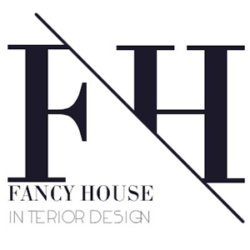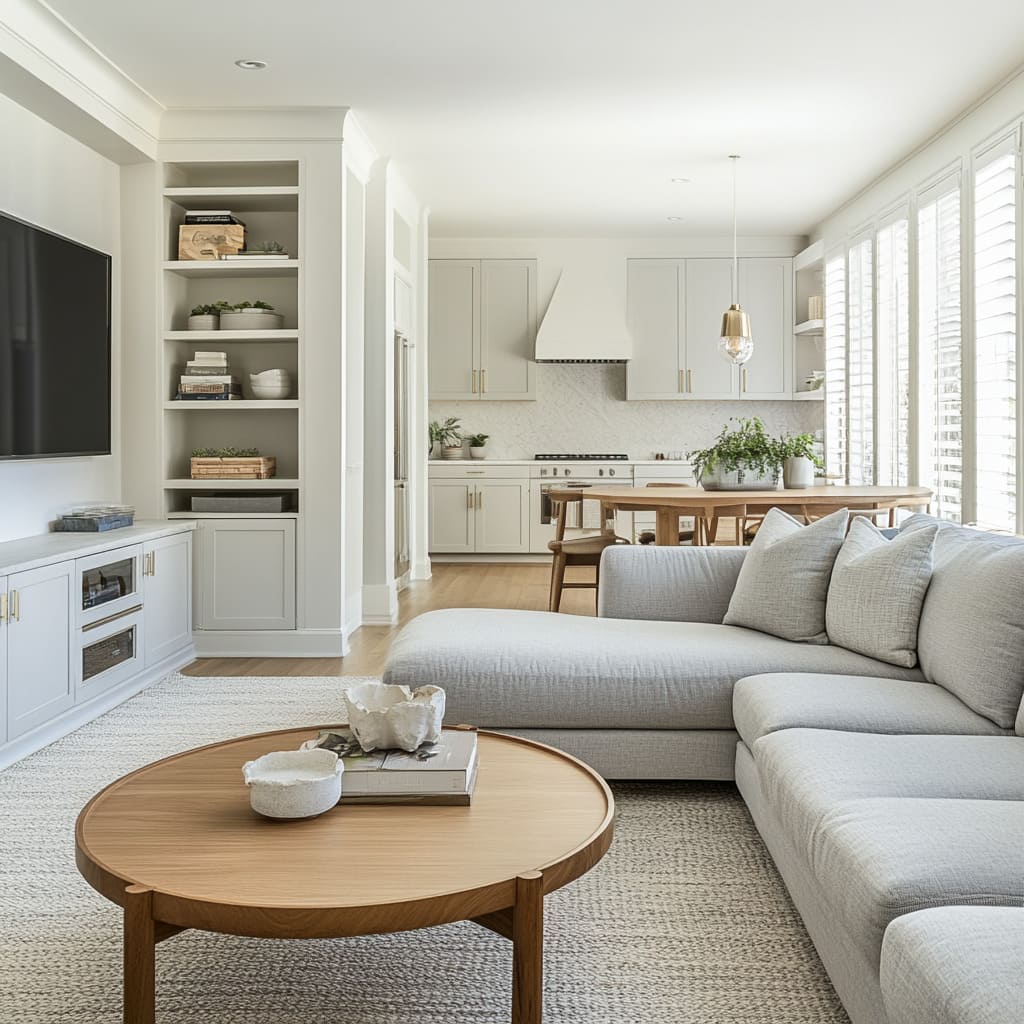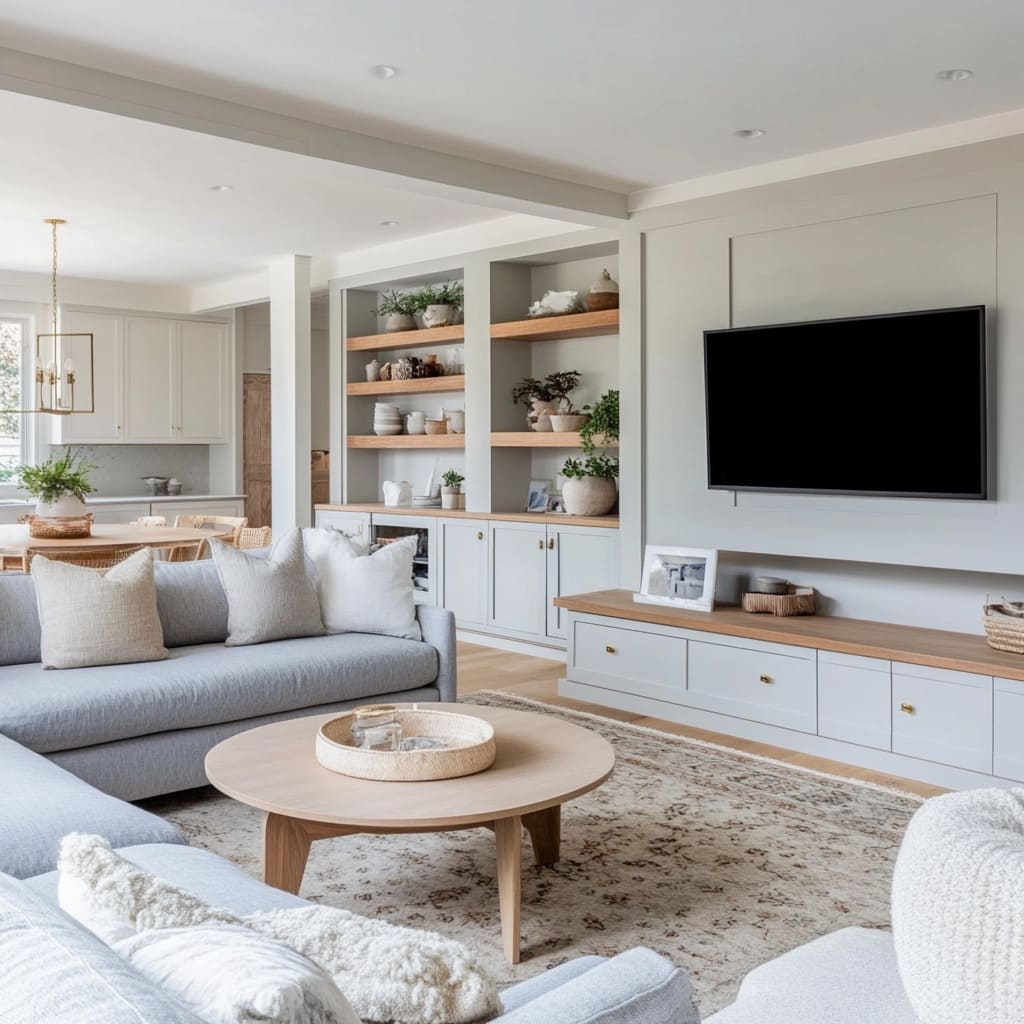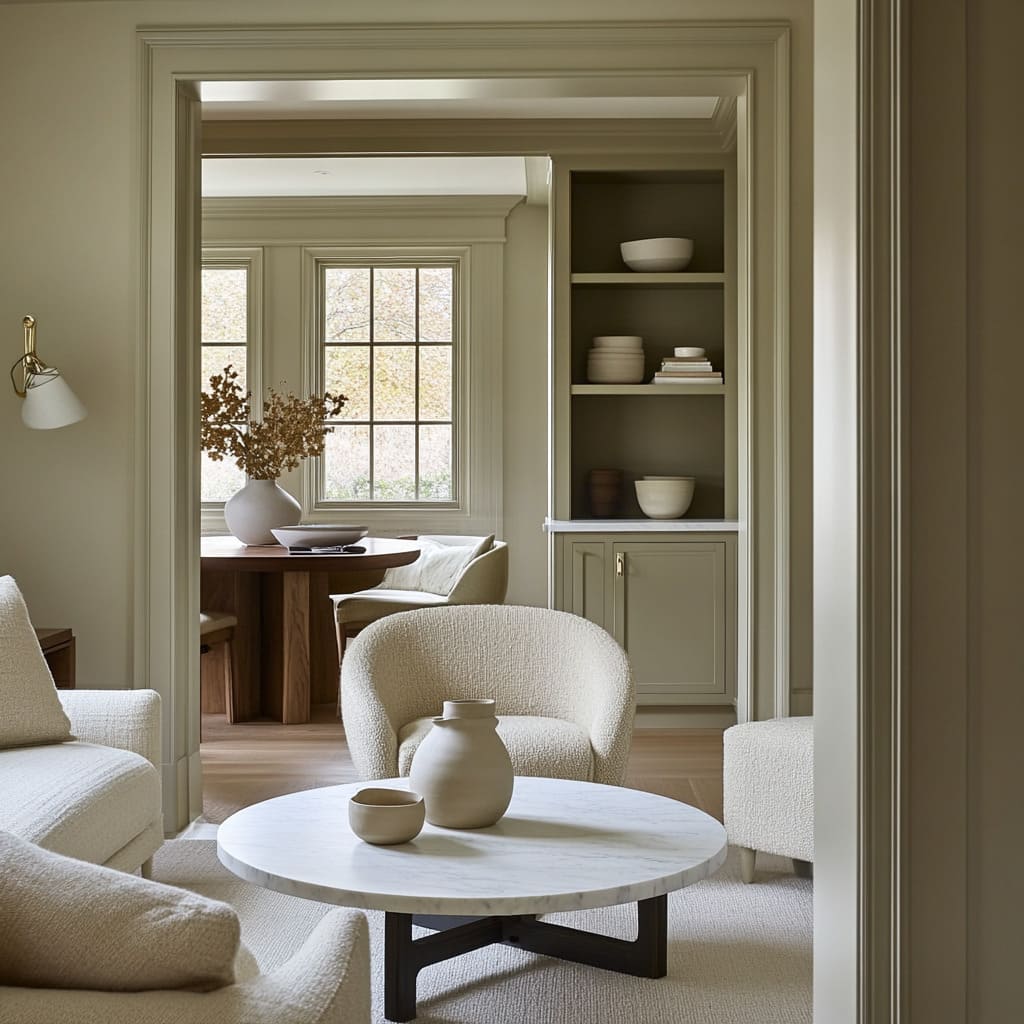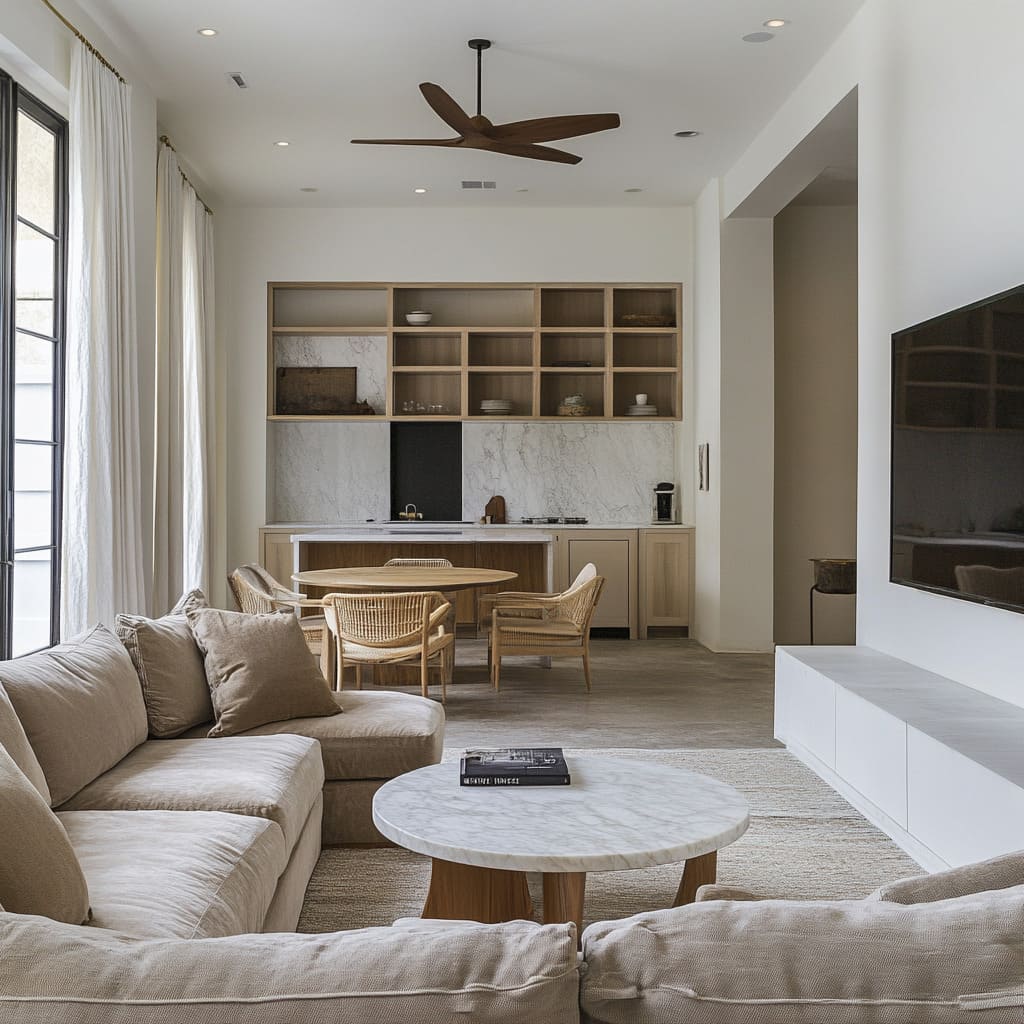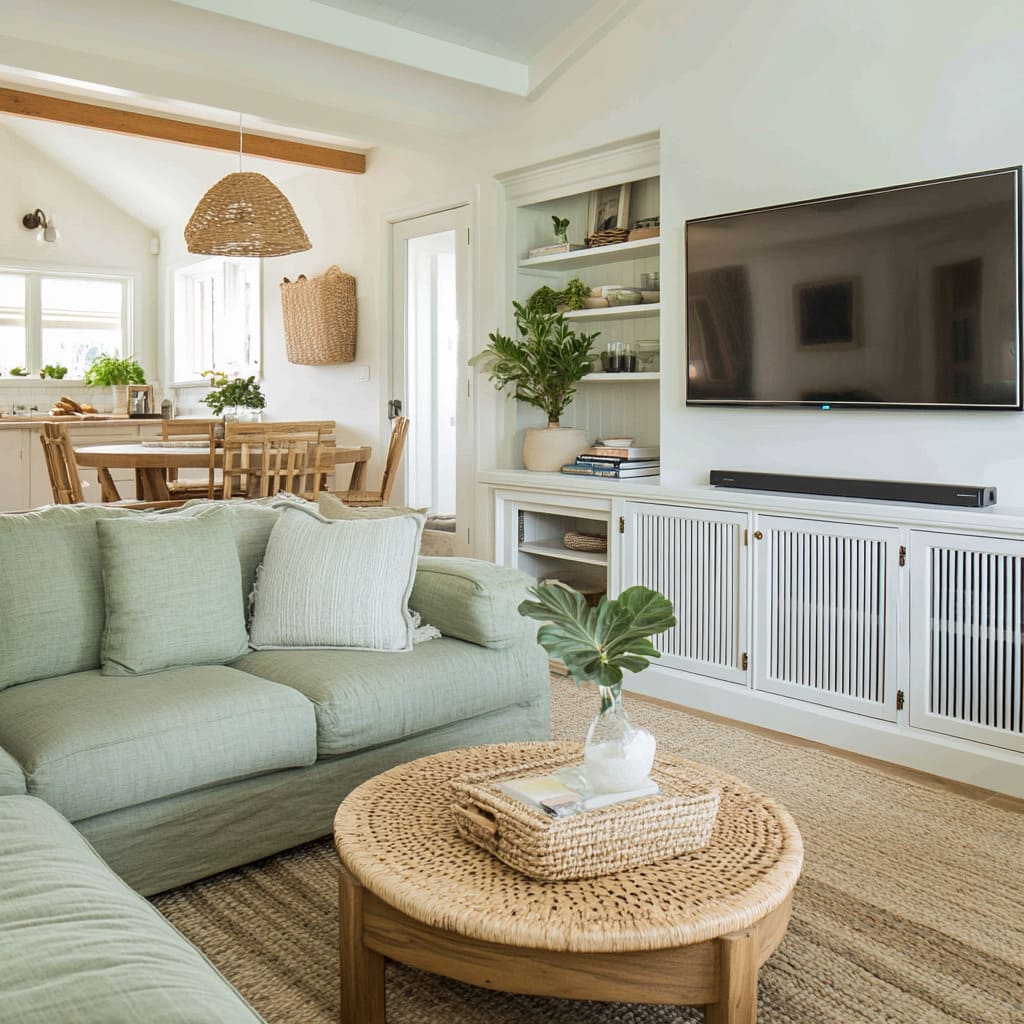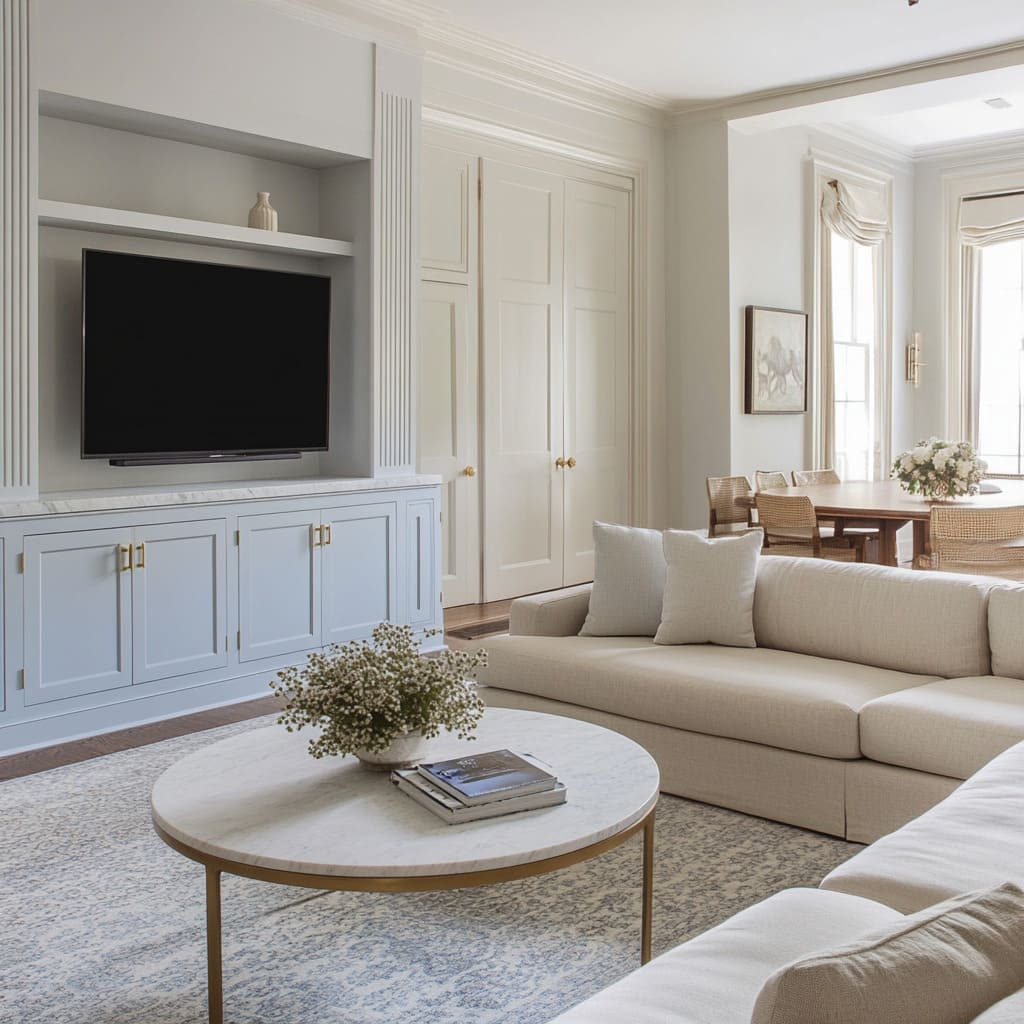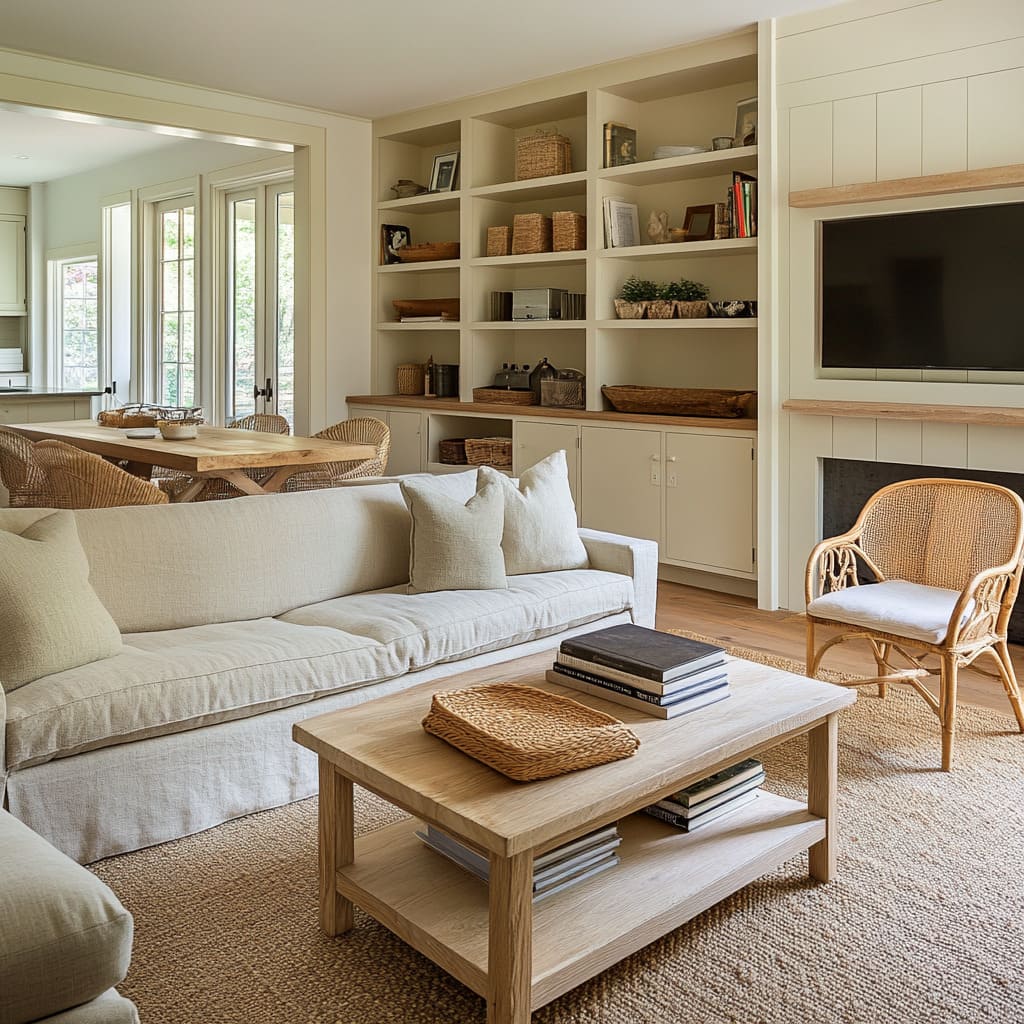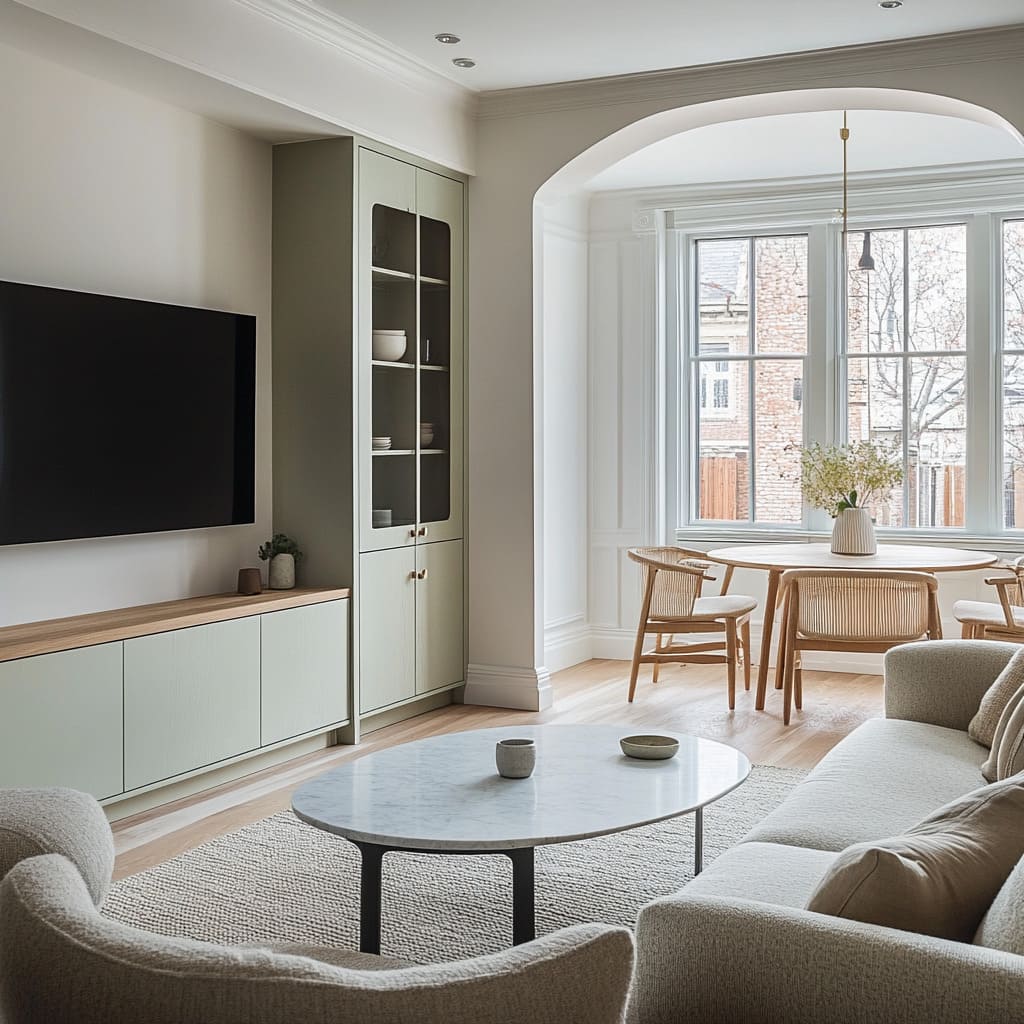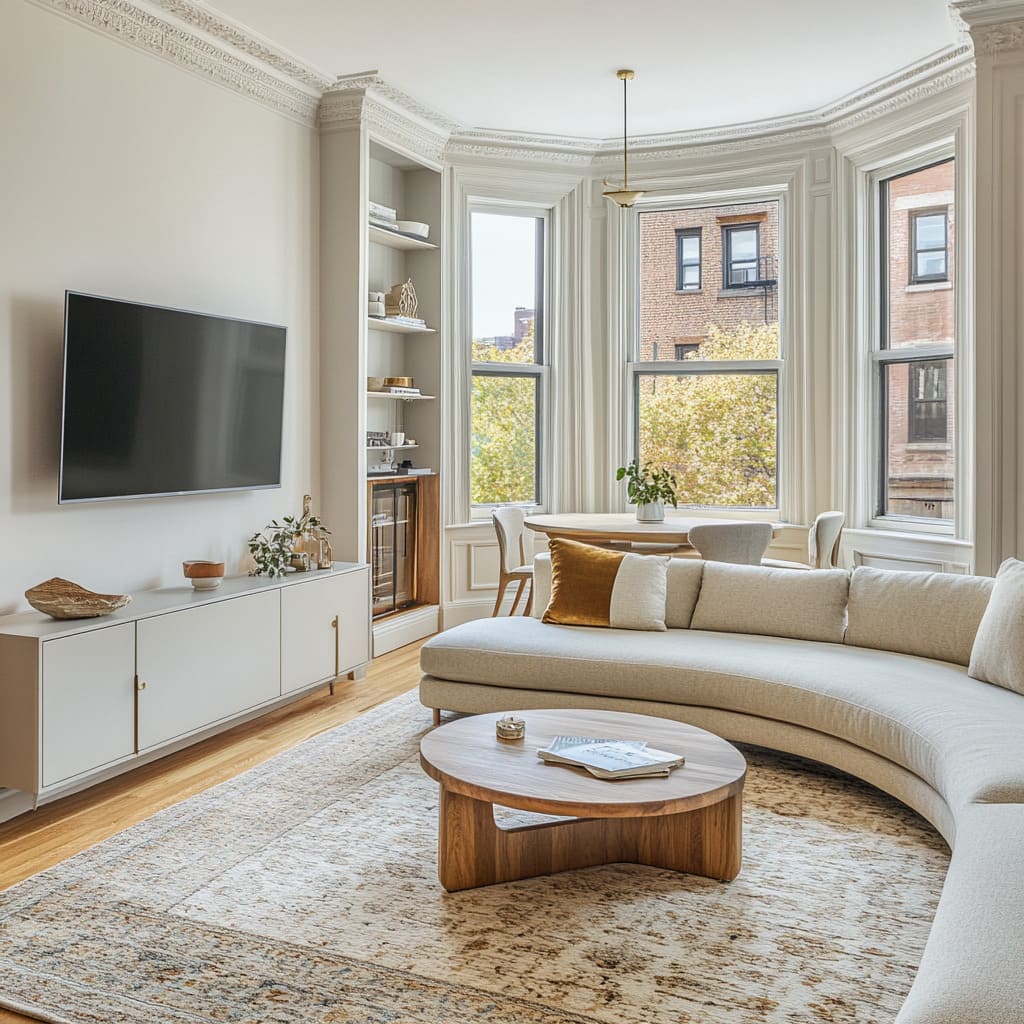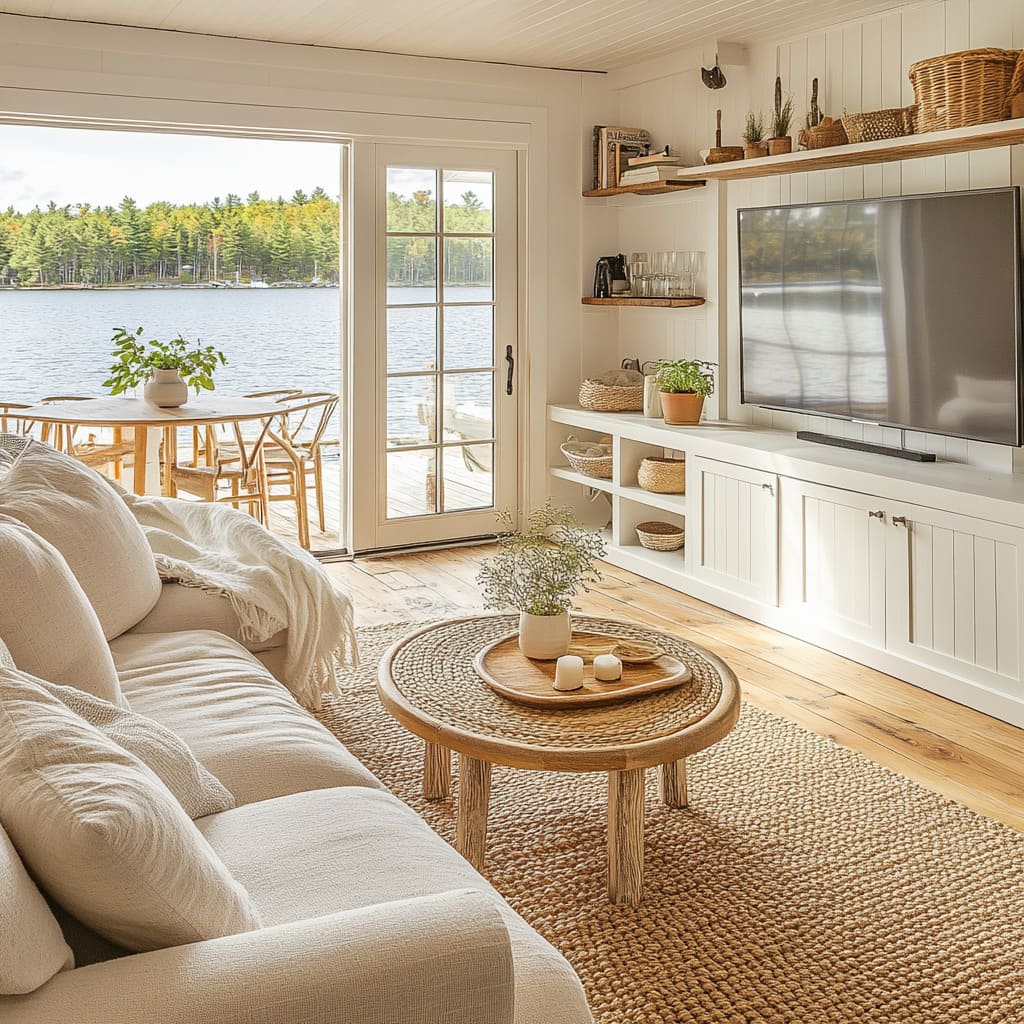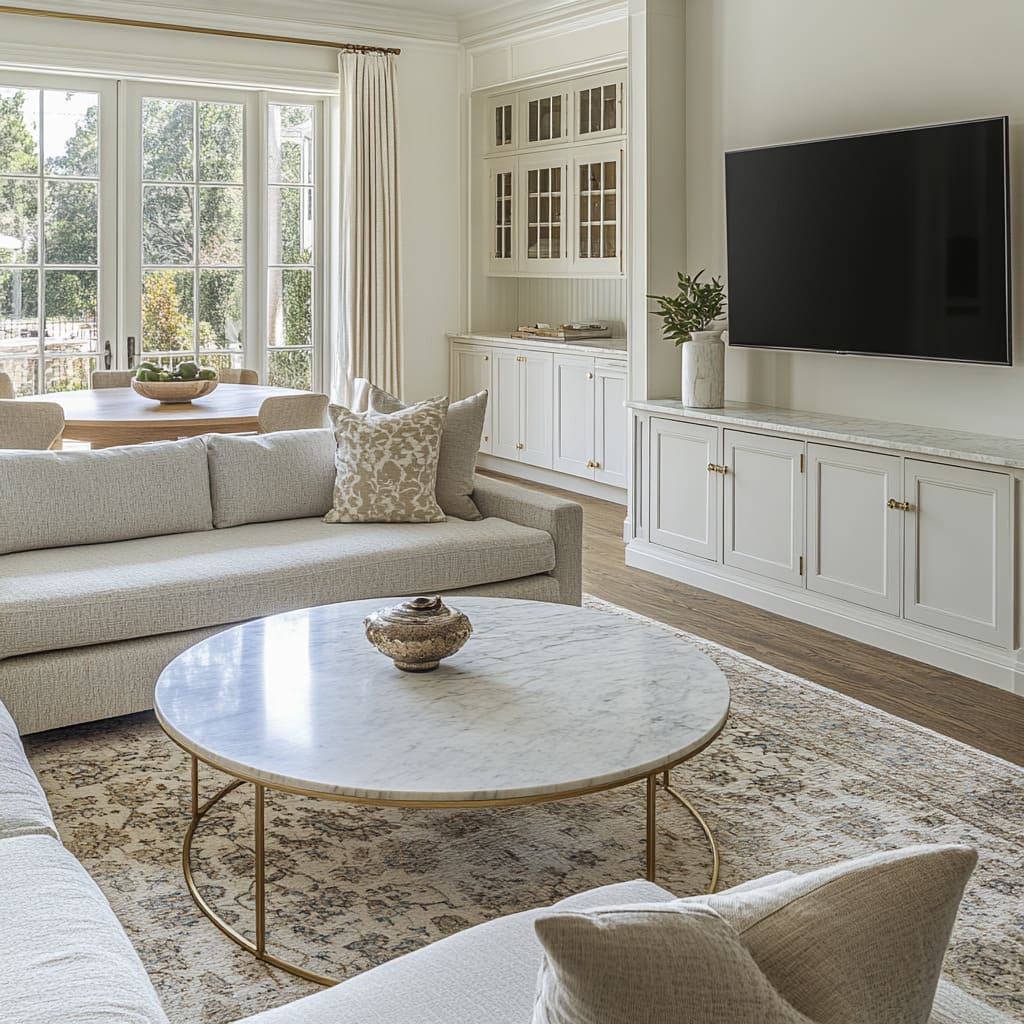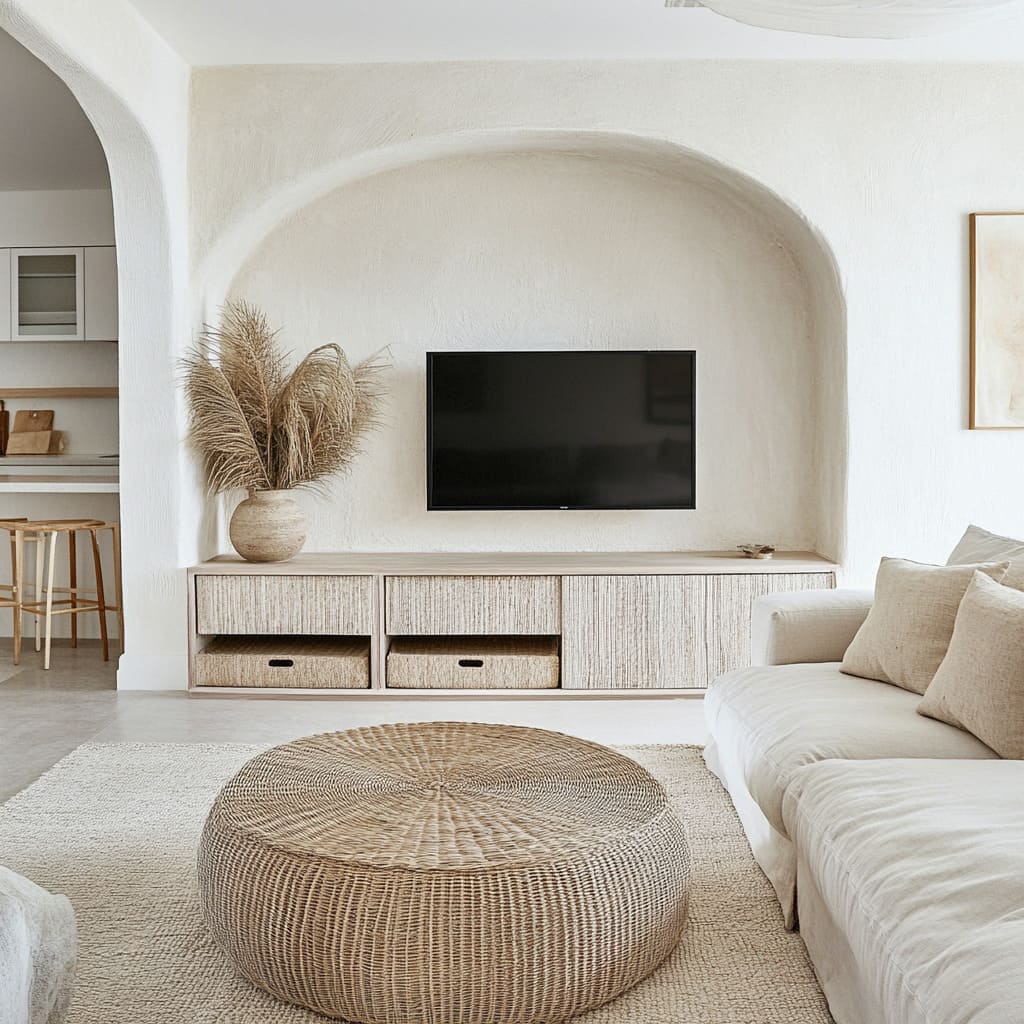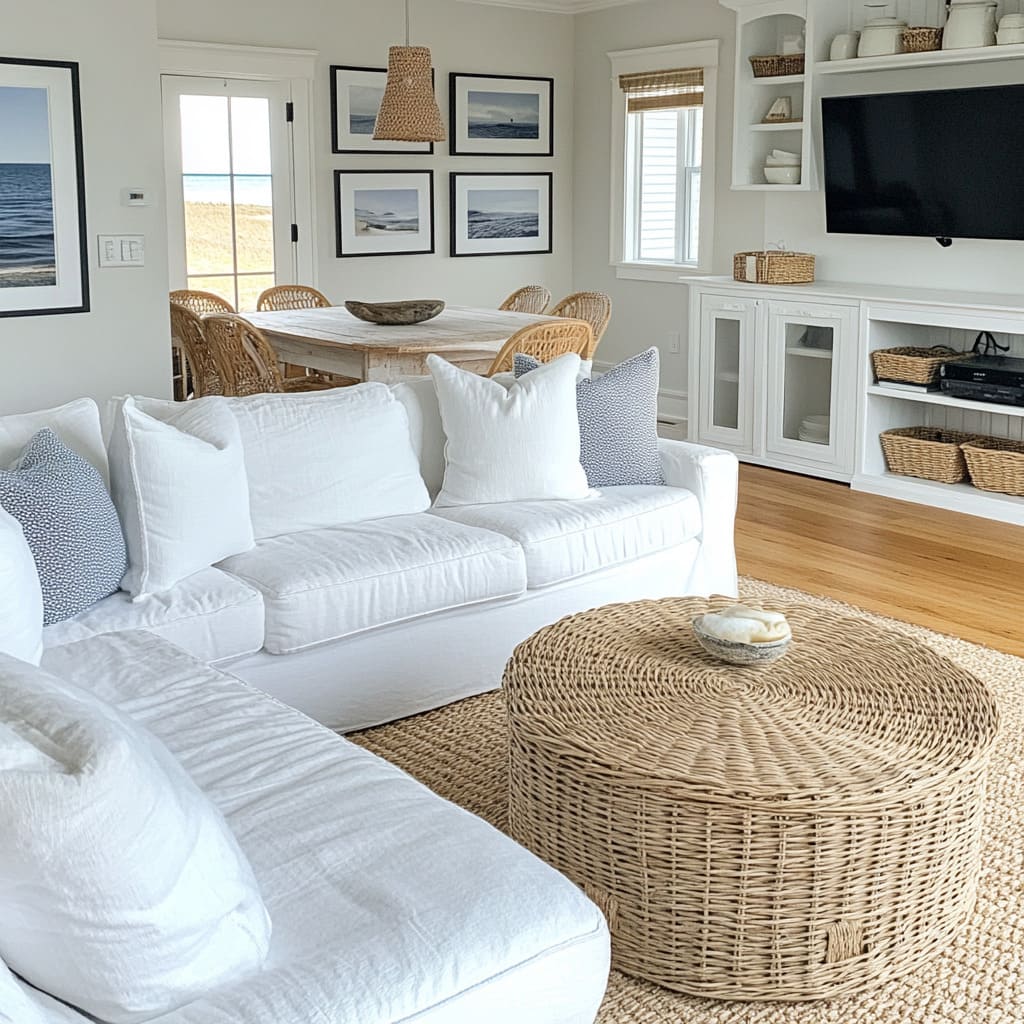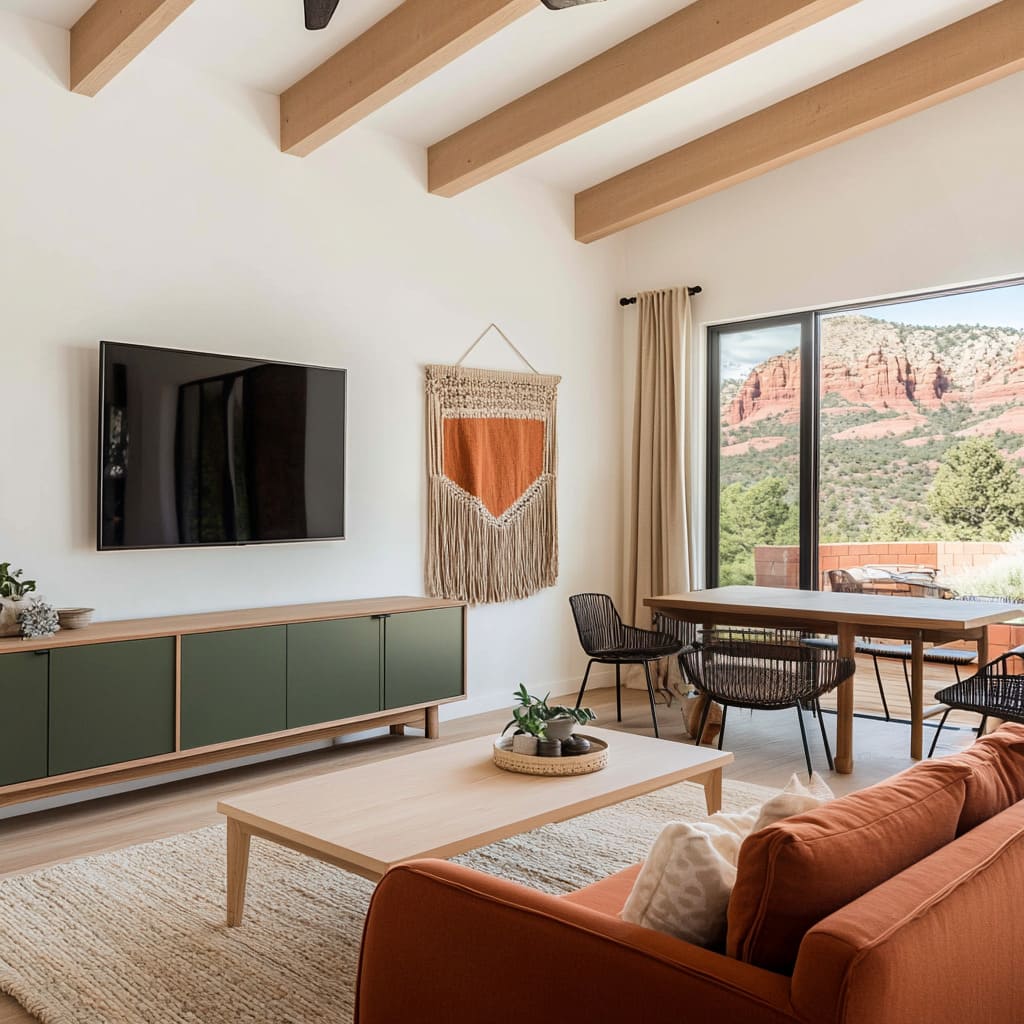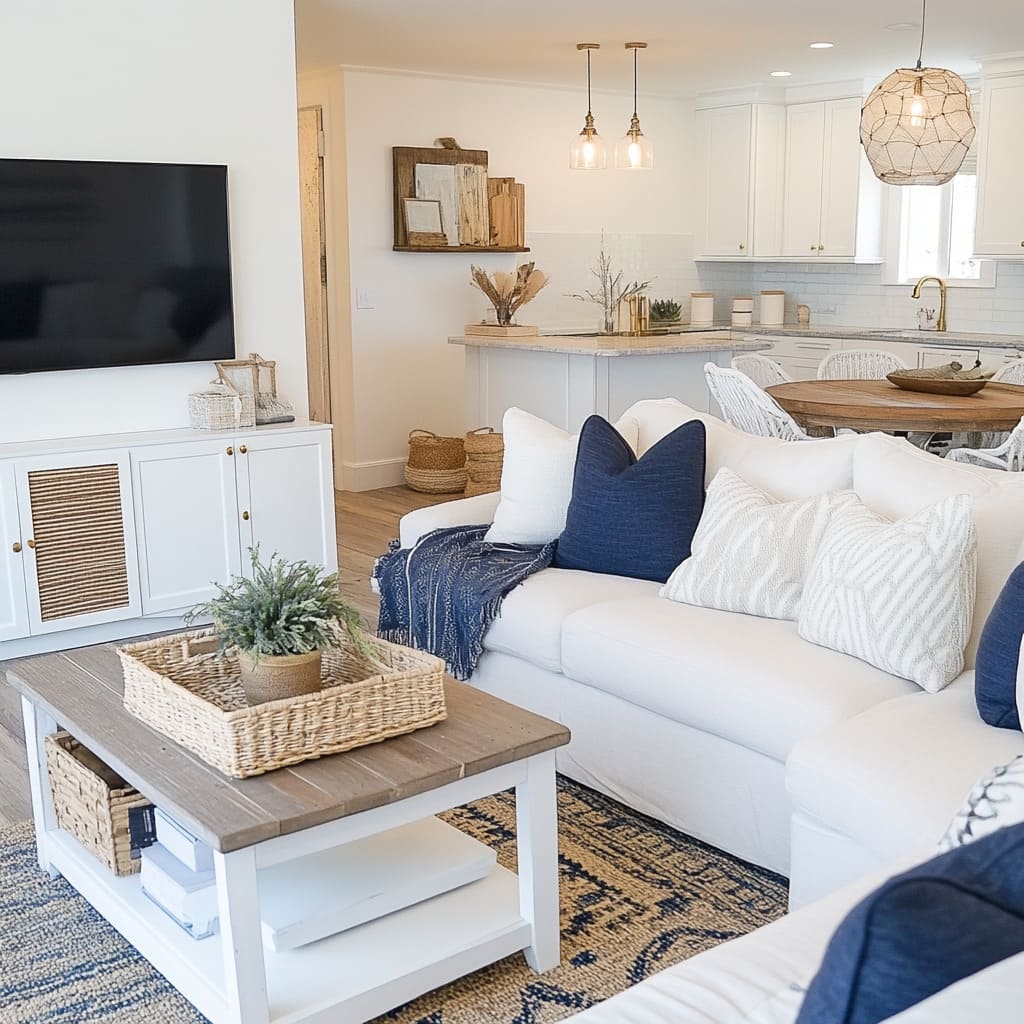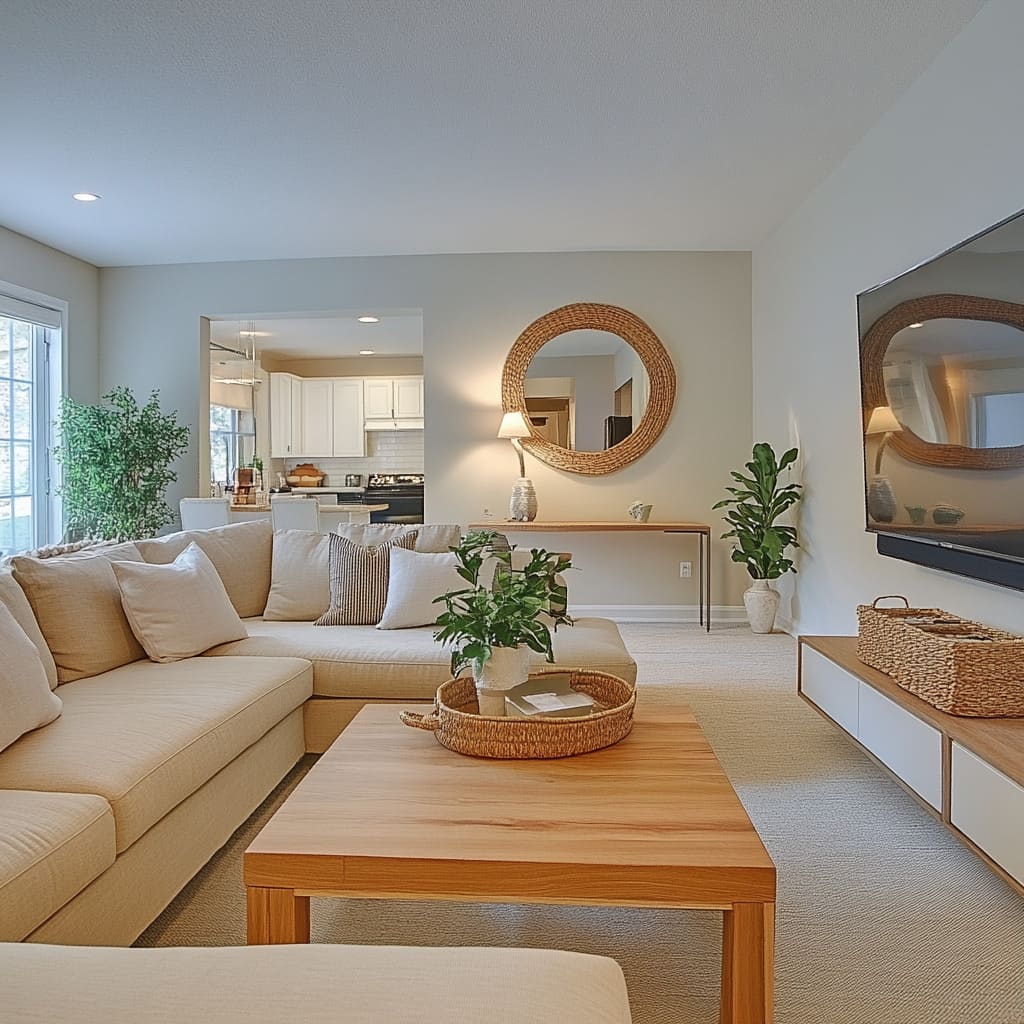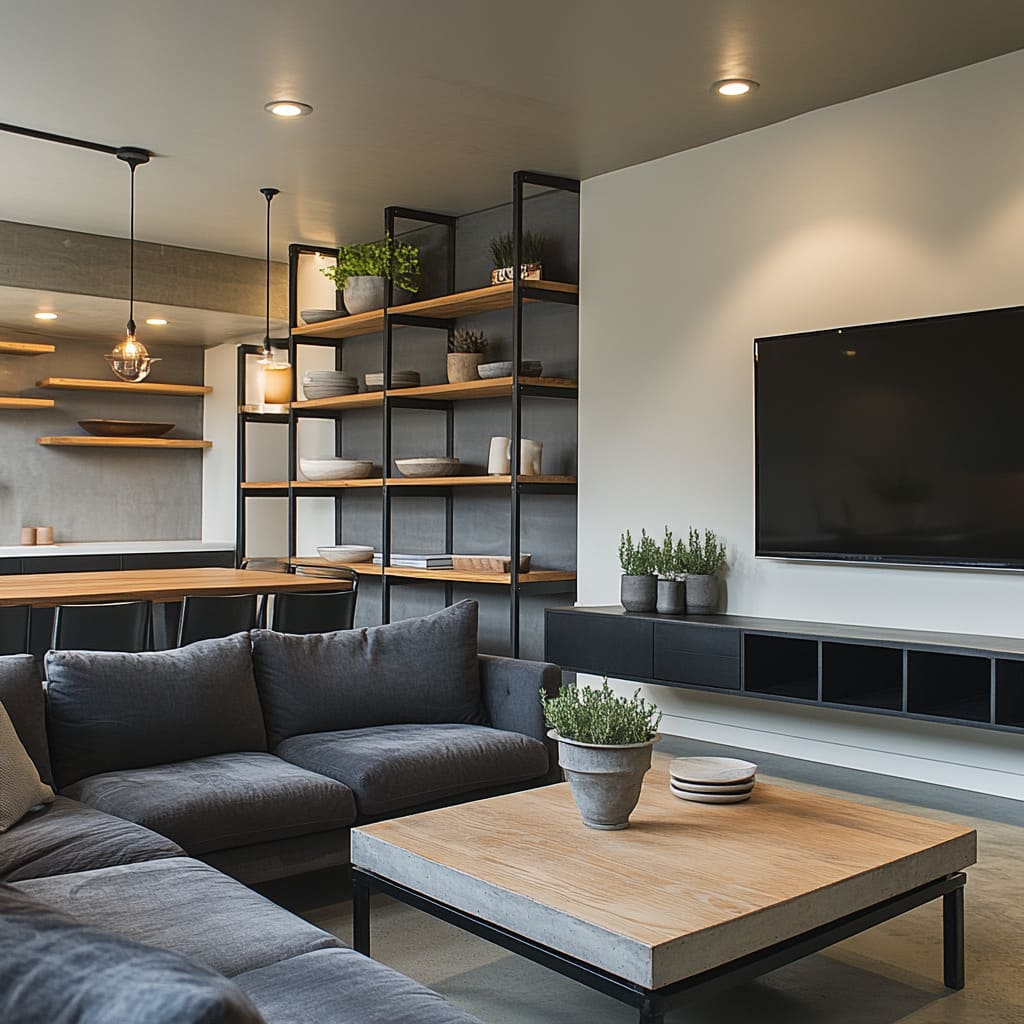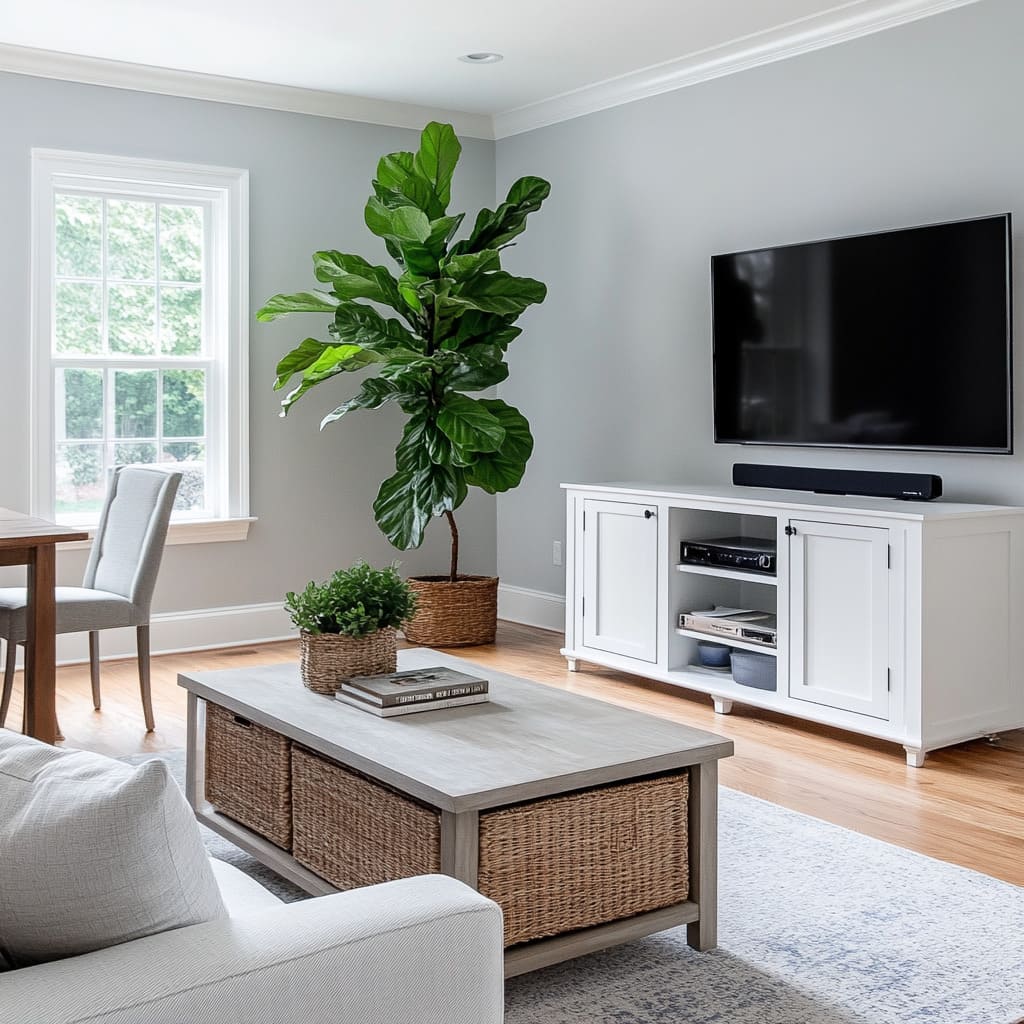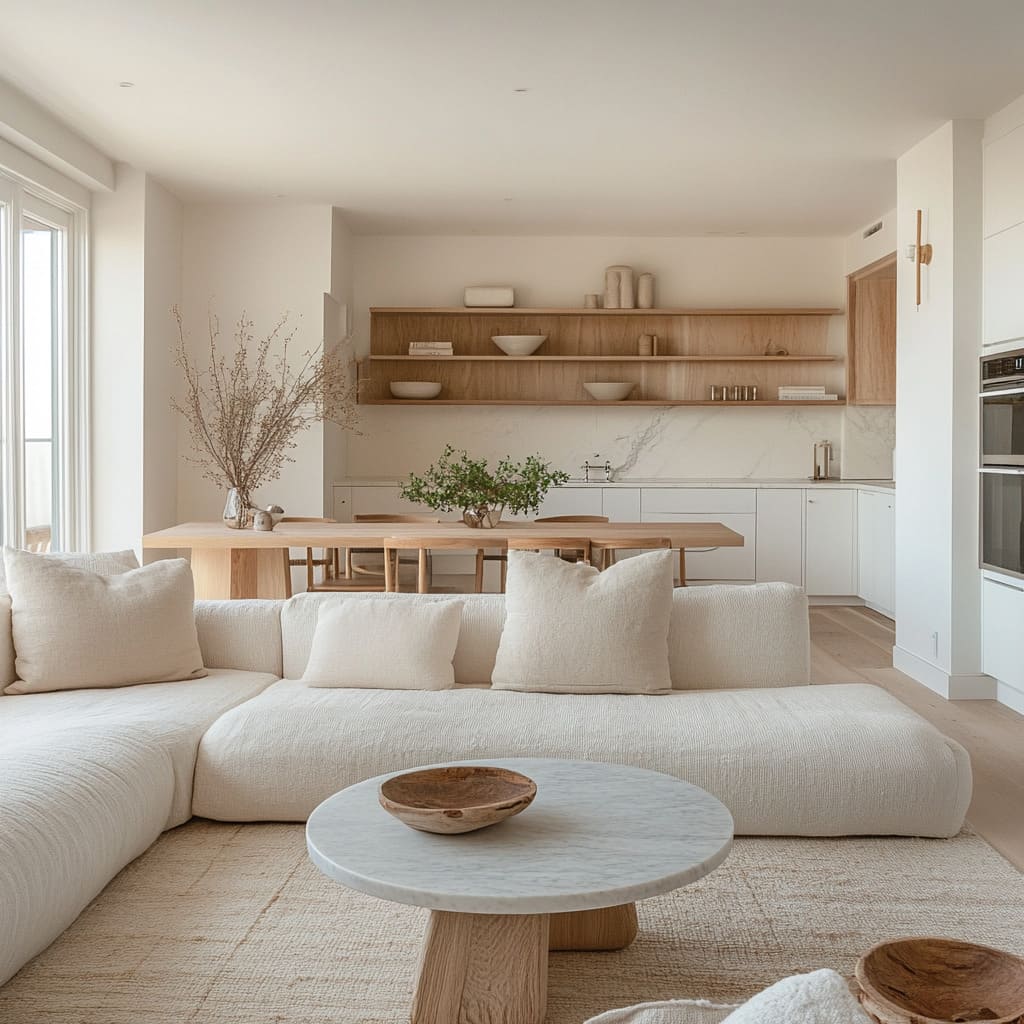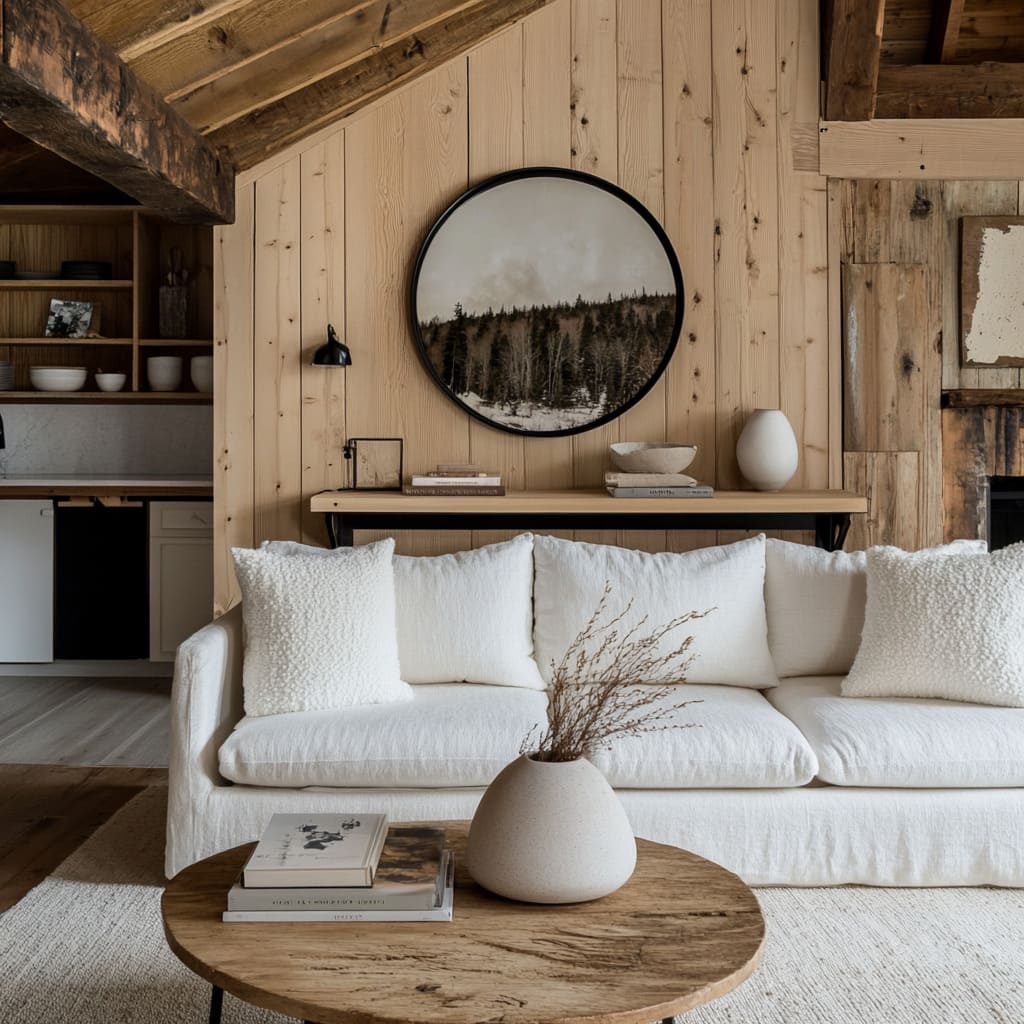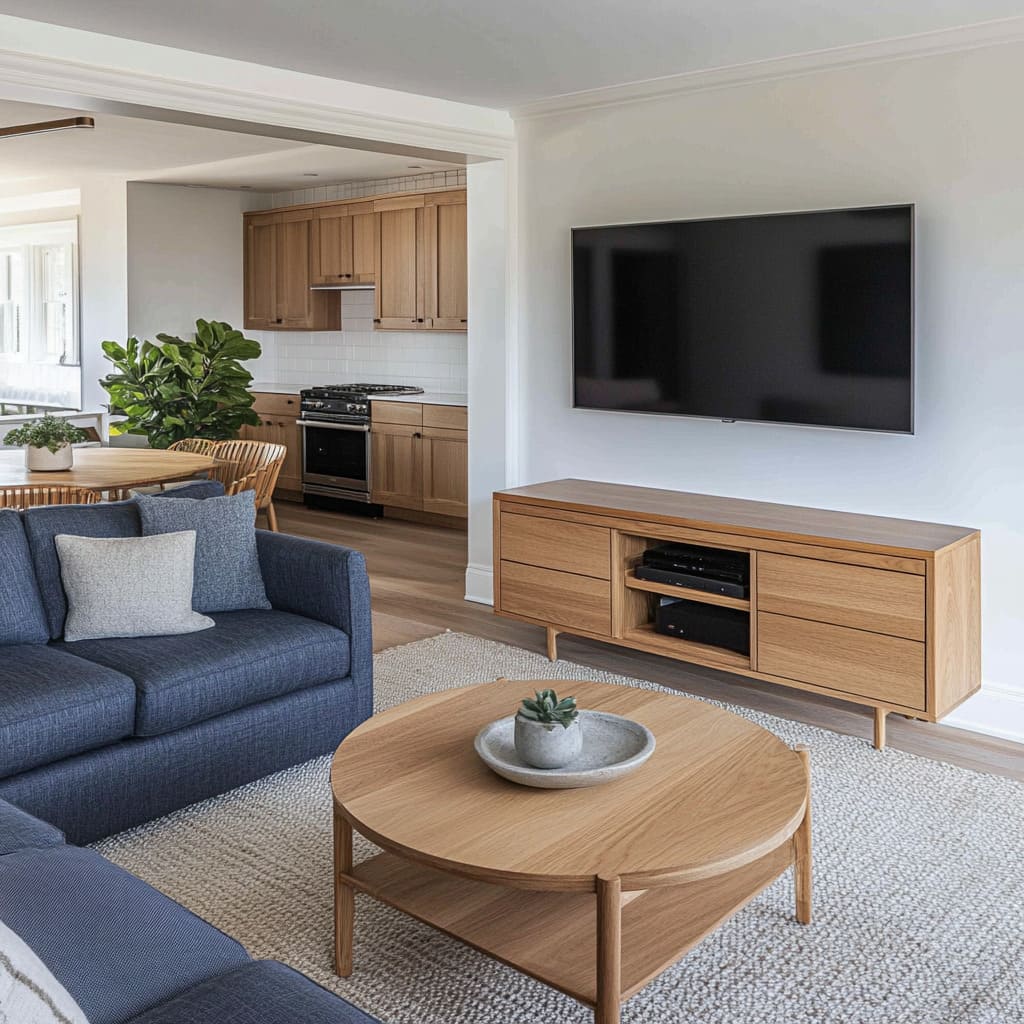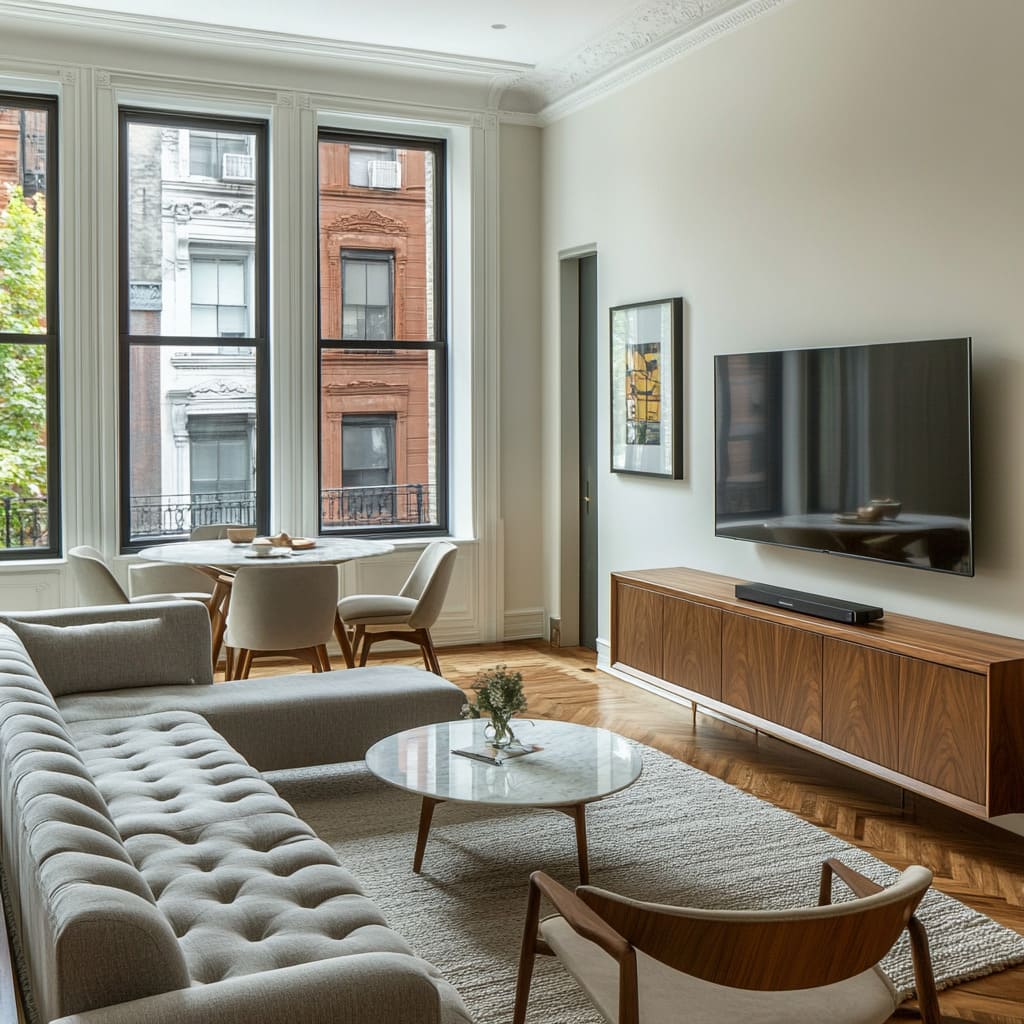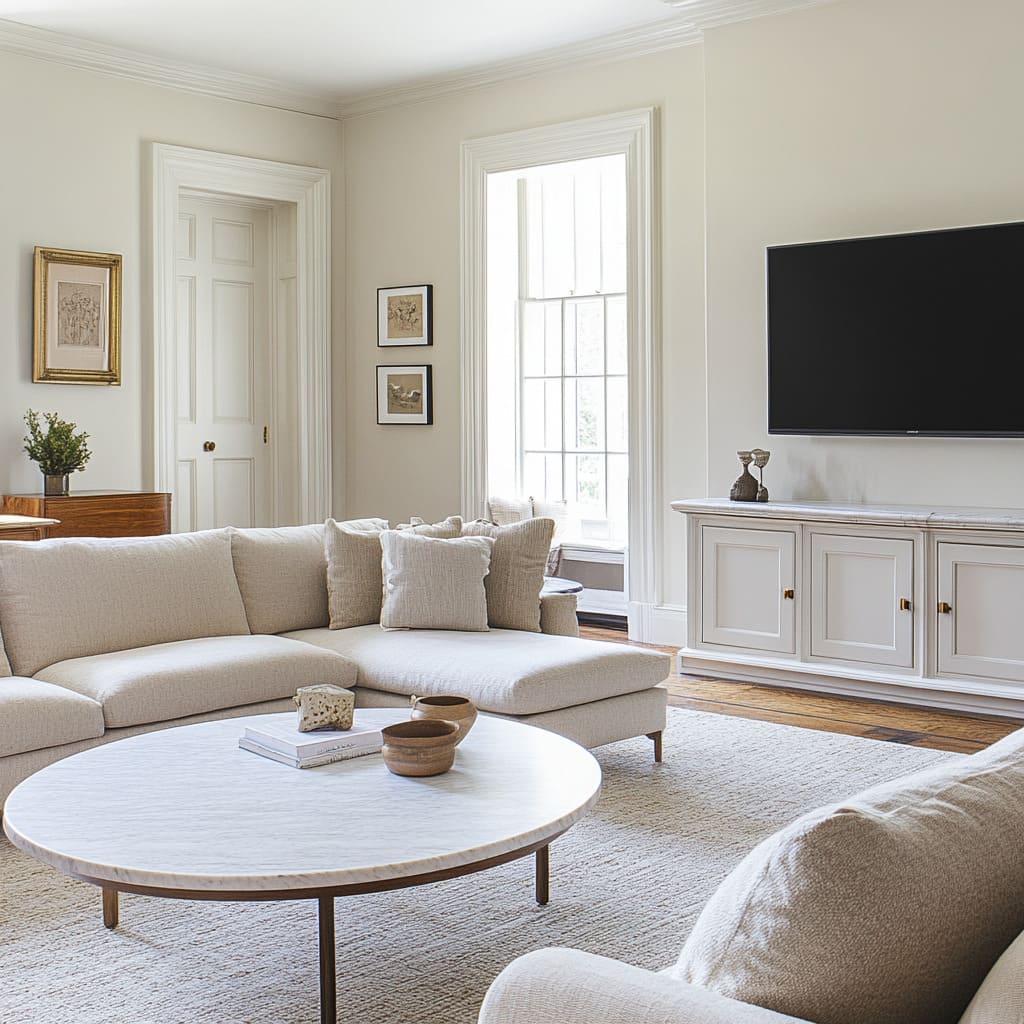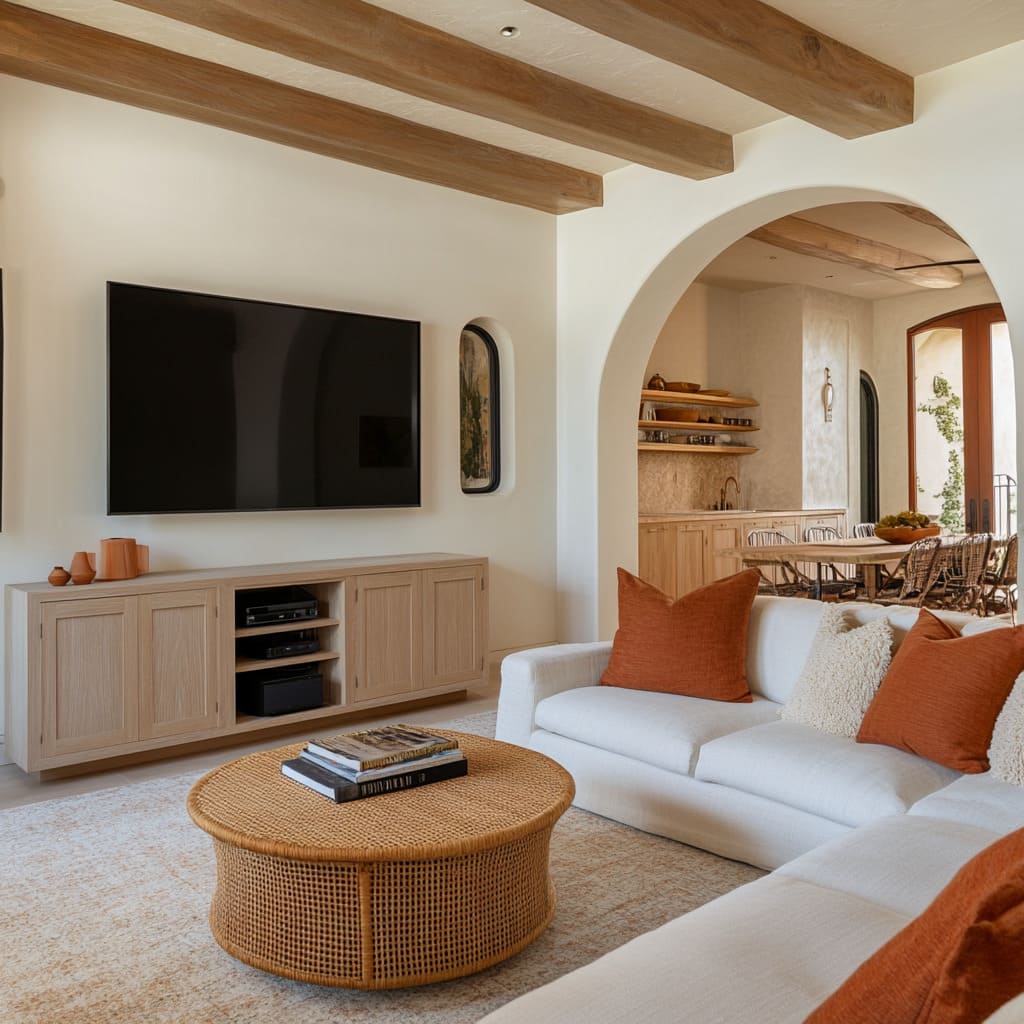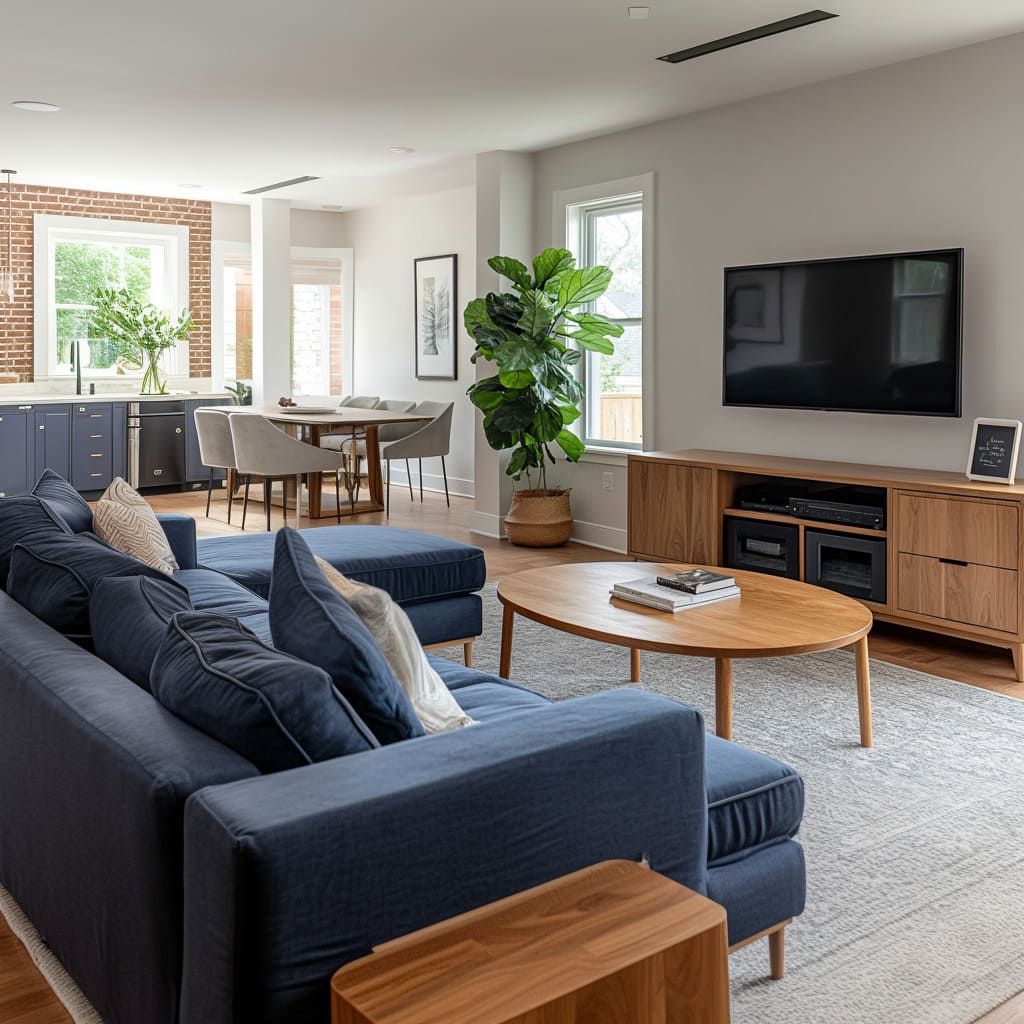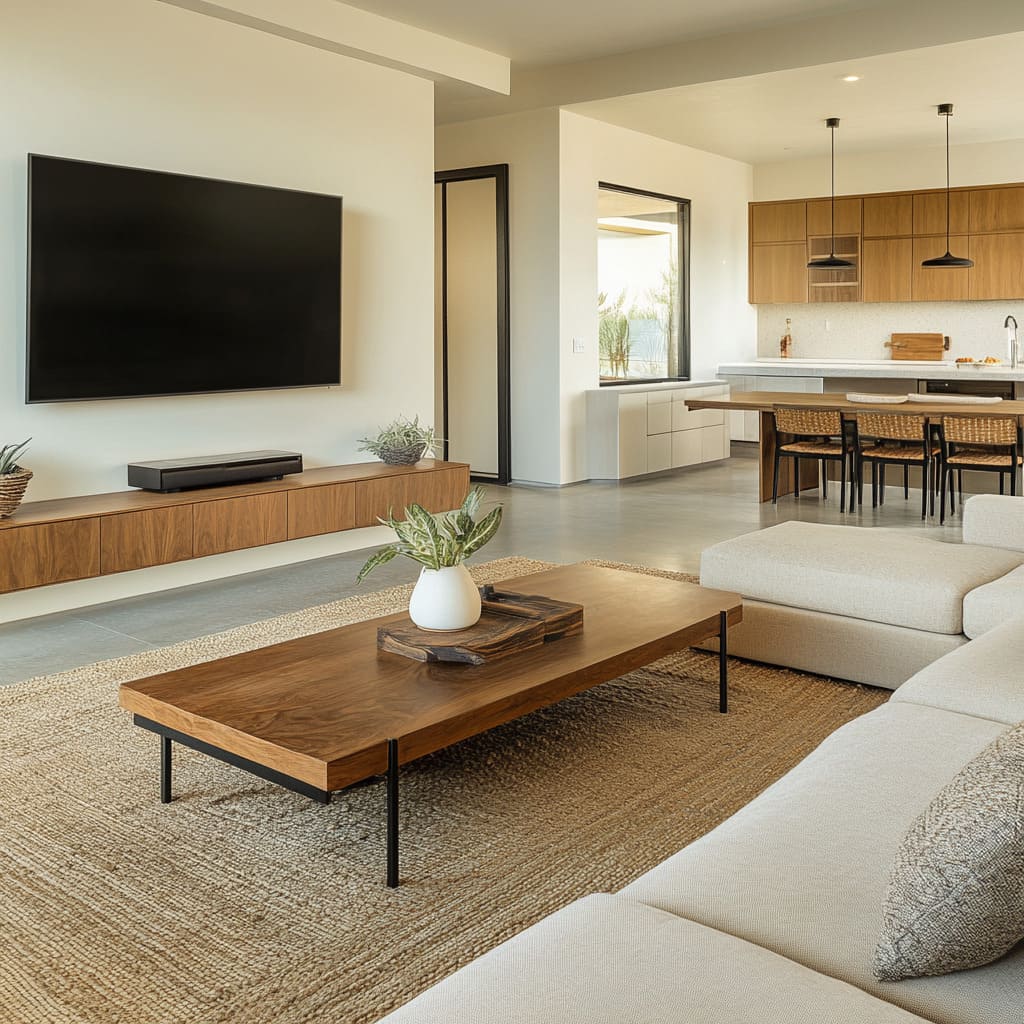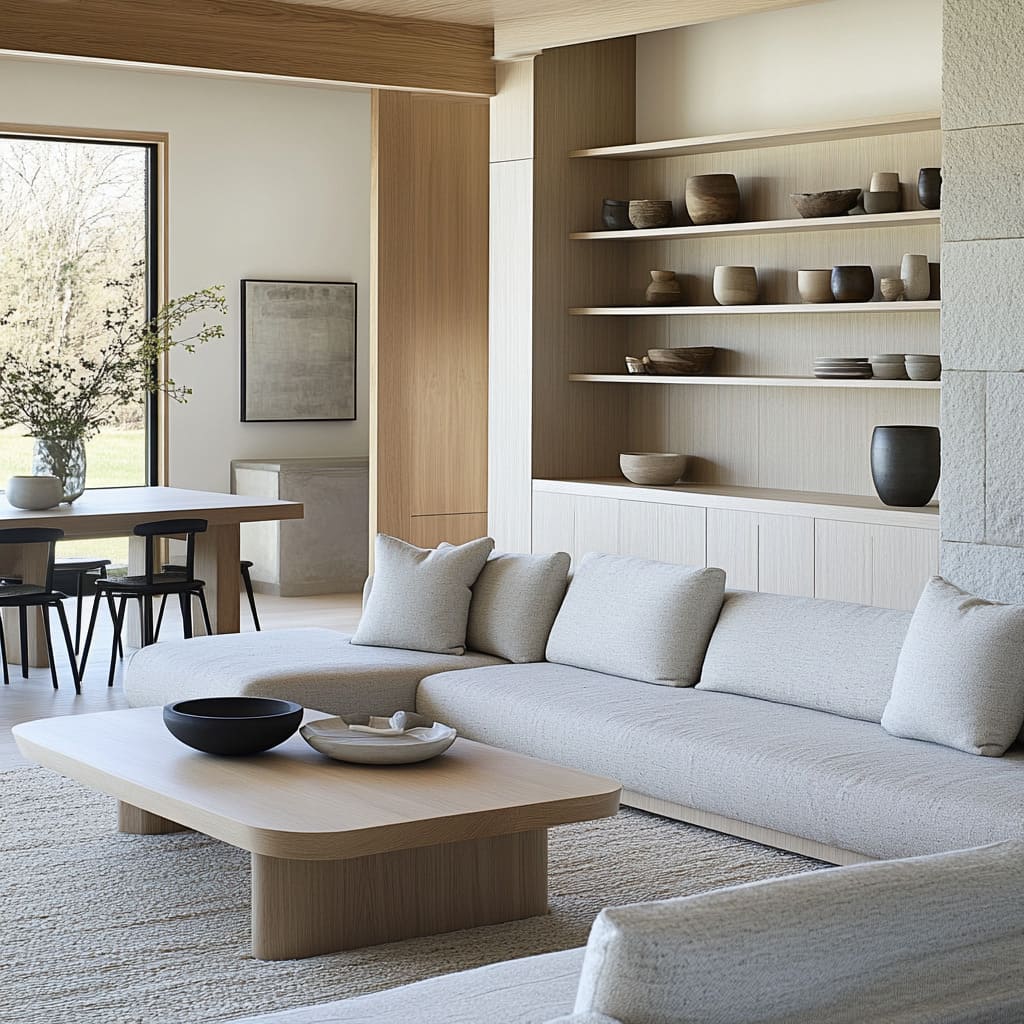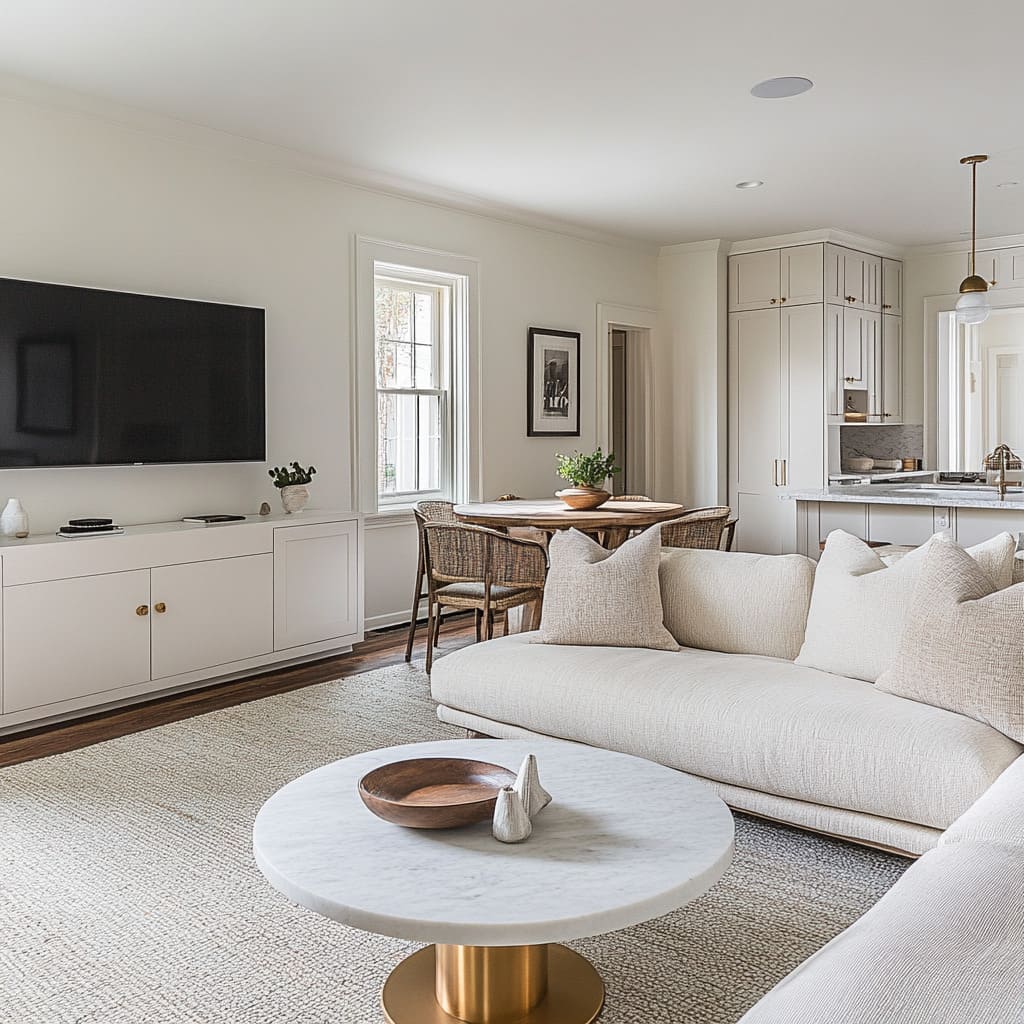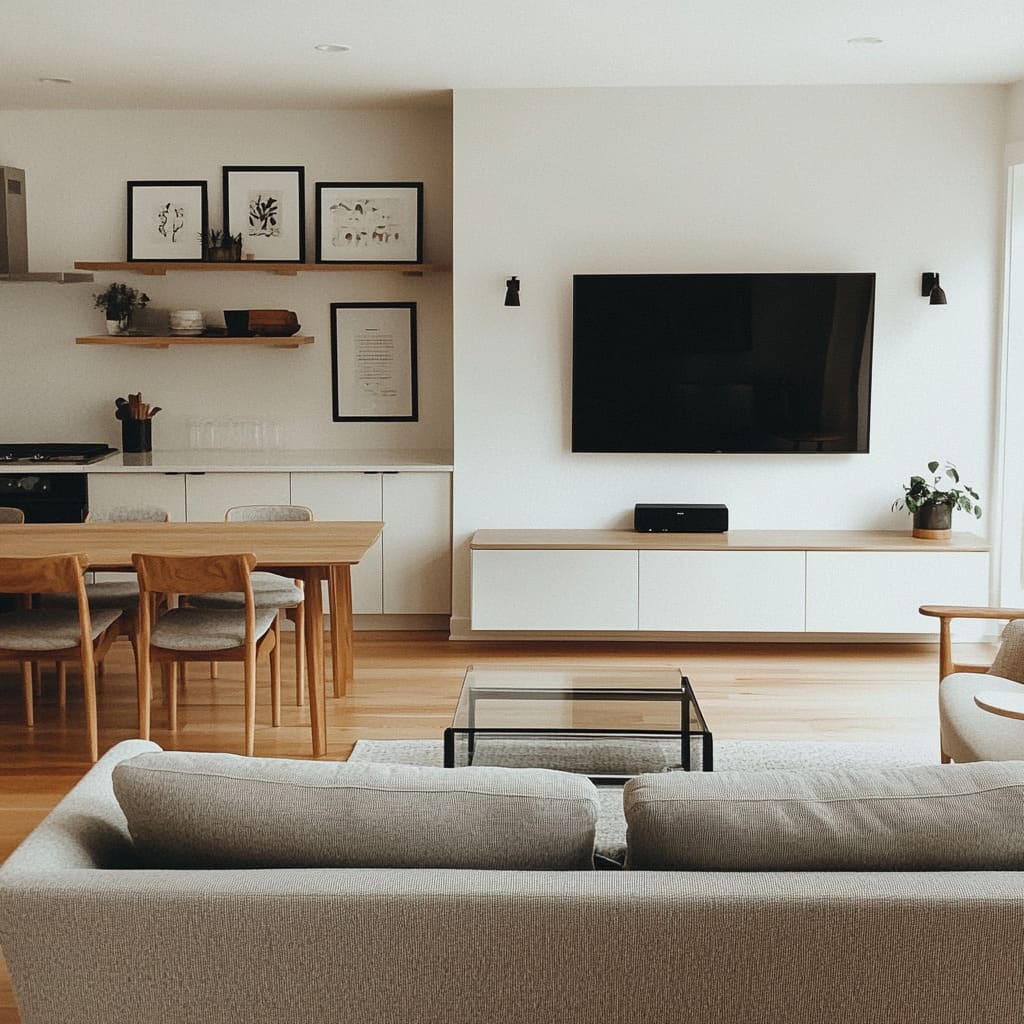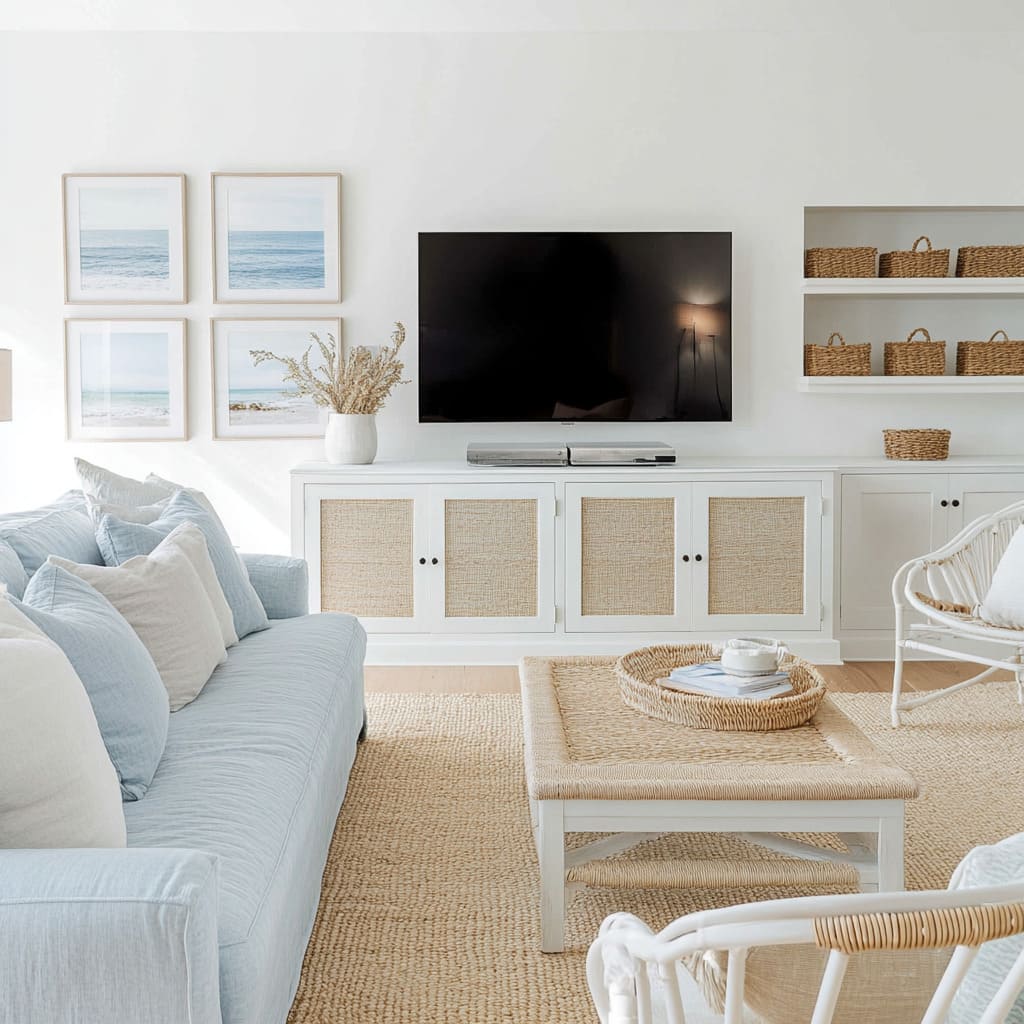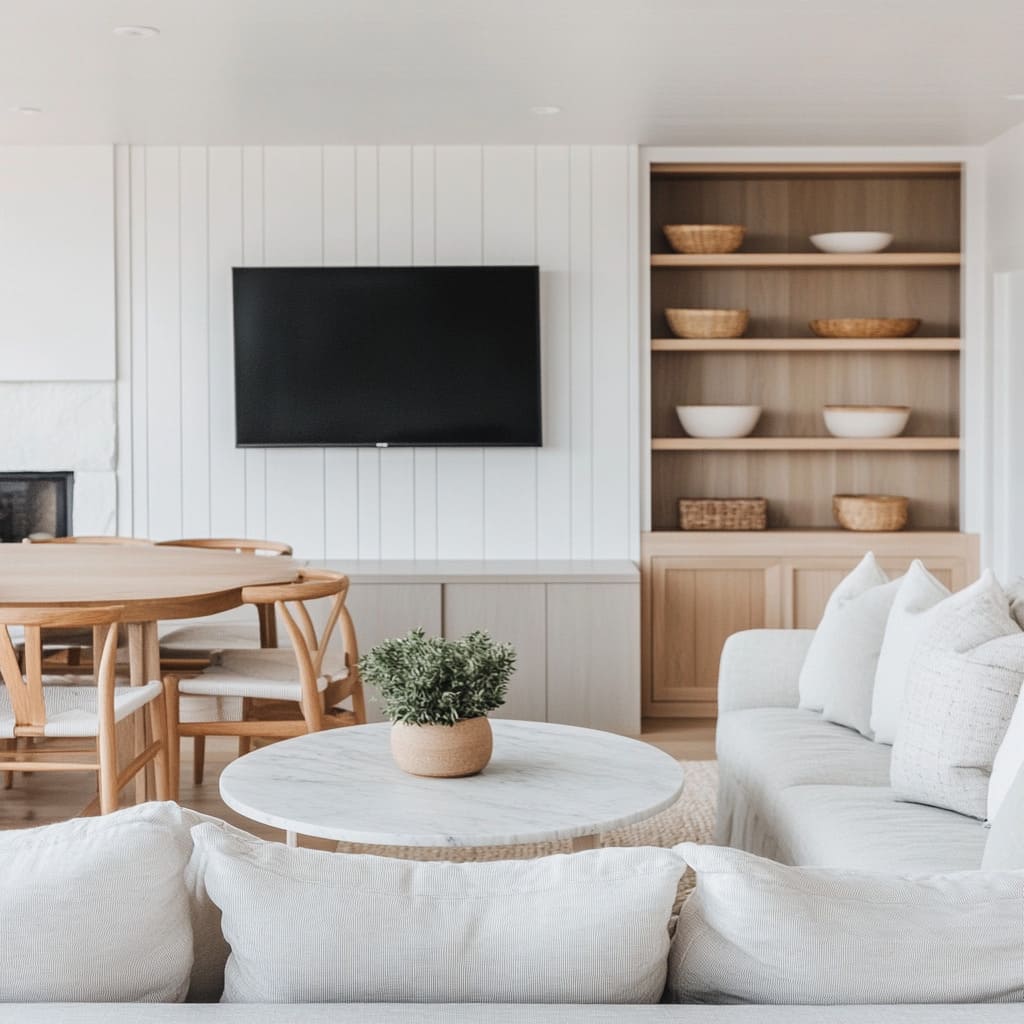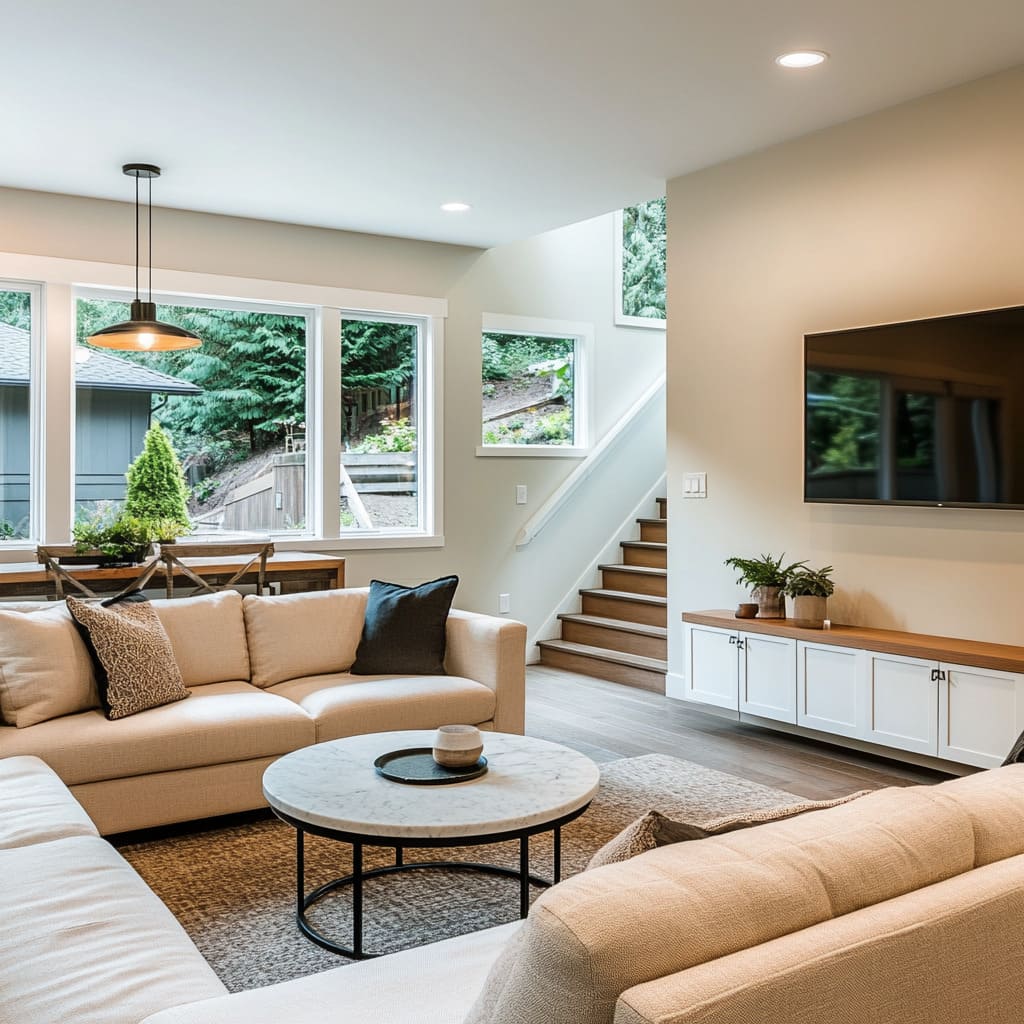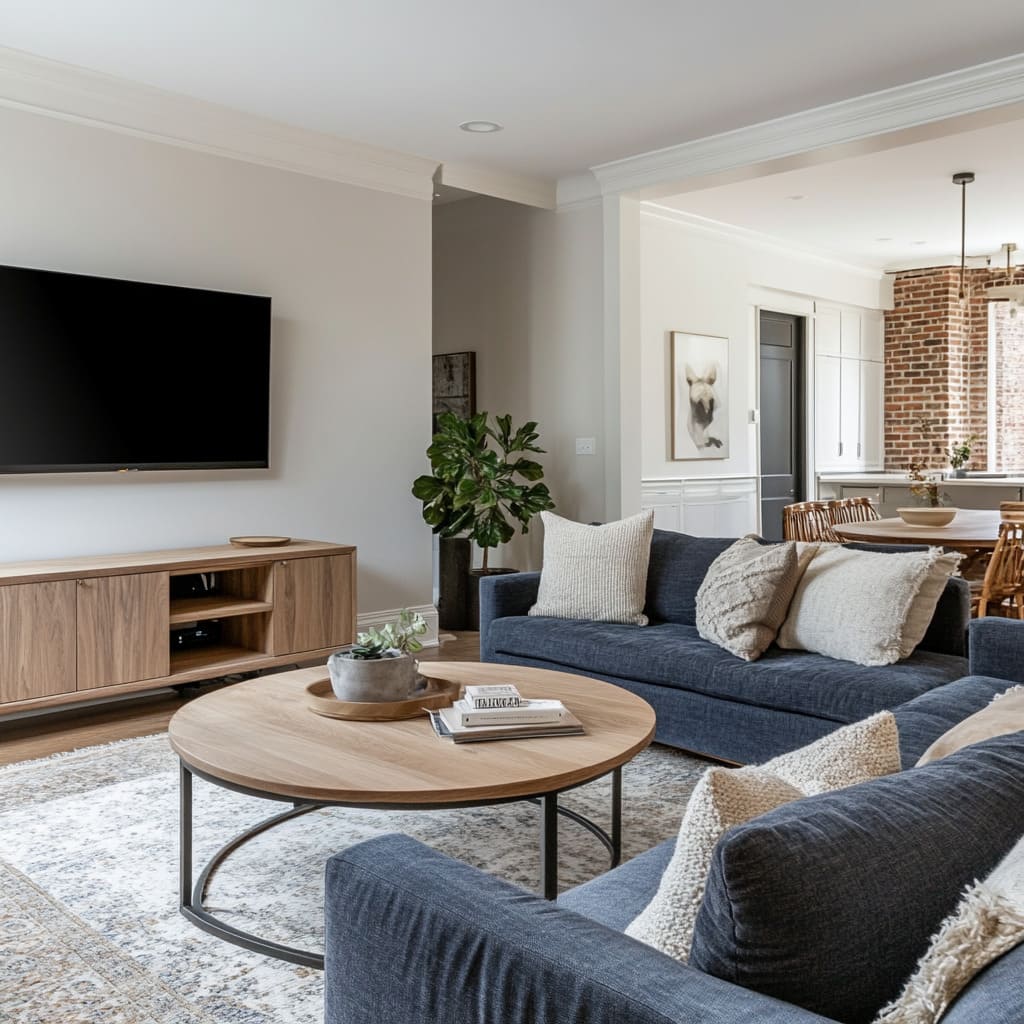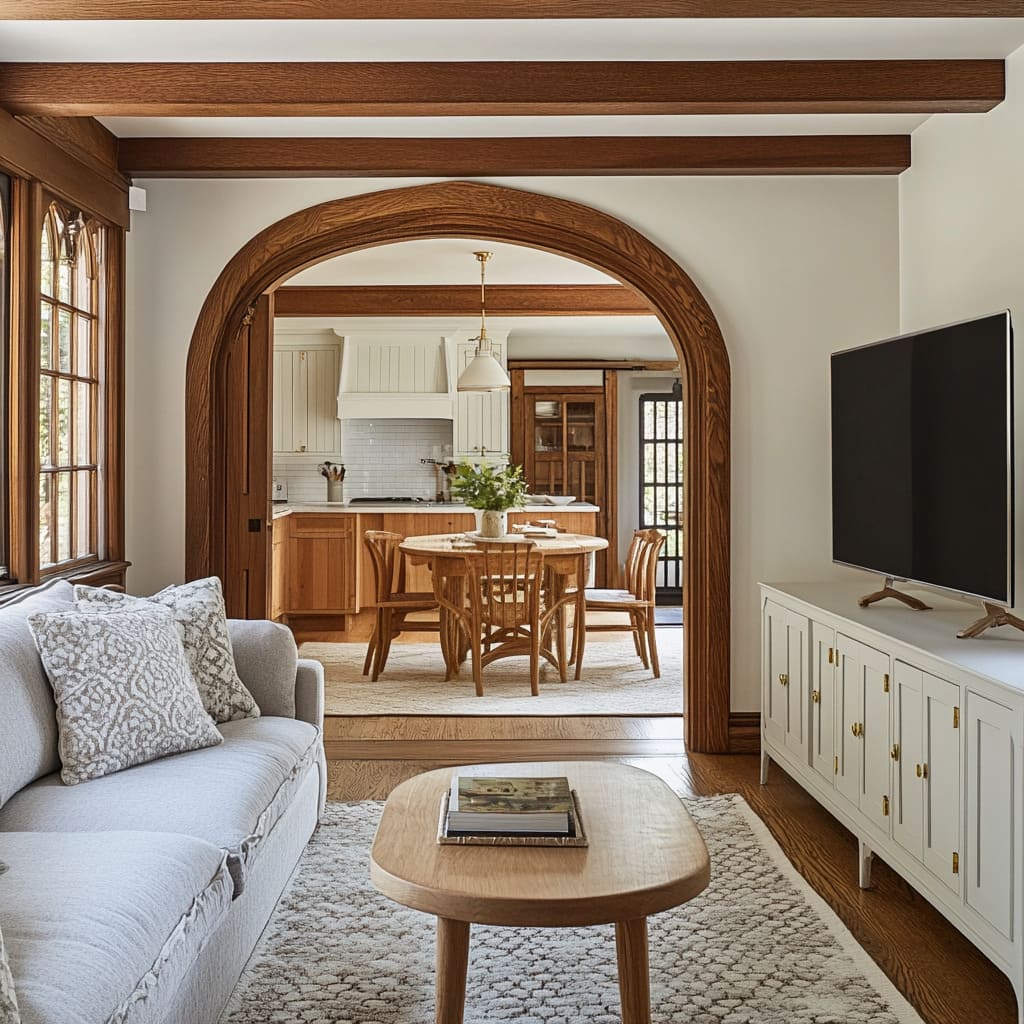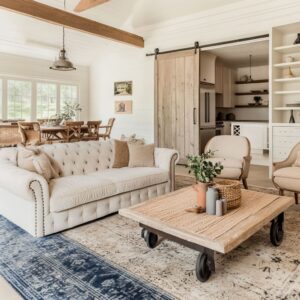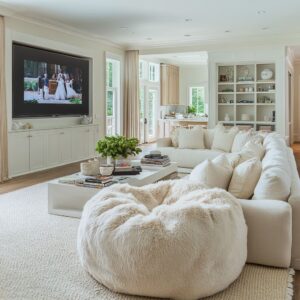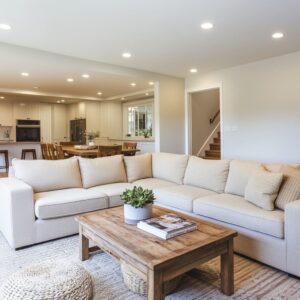Scandinavian design has become a favorite among homeowners and designers across the U. S.
, largely because of its simple, functional, and warm approach. Rooted in Scandinavian countries known for long winters and limited daylight, this style emphasizes clean lines, natural materials, and an inviting atmosphere.
While it began as a response to the need for brighter, more efficient spaces, Scandinavian design has since developed a strong following far beyond its origins, including in the diverse layouts of American homes. Scandi living room ideas work particularly well in the U.
S. because they naturally suit open layouts and varied architectural styles, from coastal cottages and mid-century ranches to urban lofts and classic Victorian homes.
This adaptable style celebrates light, simplicity, and natural finishes—elements that pair easily with American architecture. The goal is to bring a sense of ease and cohesion that enhances the home’s existing structure rather than overwhelming it with extra details.
The popularity of Scandinavian design in the U. S.
also stems from its versatility in fitting into many regions and climates. For instance, minimalist living room ideas blend seamlessly into spacious homes in the Midwest or cozy, coastal settings along the East Coast.
This style prioritizes neutral color palettes, natural light, and uncluttered spaces, making it a refreshing choice that feels universally inviting. From urban apartments to suburban homes, Scandinavian elements like open shelving, light wood furniture, and soft textiles create a comfortable and cohesive environment that appeals to the American desire for functionality paired with style.
As more people embrace Scandinavian design, it’s easy to see why it has become such a sought-after aesthetic in American interiors. Its focus on quality over quantity, simplicity over excess, and warmth over formality makes it a natural fit, bringing balance and comfort into the everyday.
Scandinavian style isn’t just about choosing the right furniture or wall color; it’s a way of shaping a home that feels open and welcoming—qualities that resonate deeply with American homeowners looking to make the most of their spaces.
Key Scandinavian Design Elements That Complement American Homes
Neutral Color Palettes and Natural Light
The foundation of Scandinavian design is its calming, neutral color palette, making it a great match for American homes that aim to feel open and welcoming. A core reason these colors work so well is their ability to reflect light, bringing an airy, spacious vibe into each room.
Whites, light grays, and soft beiges dominate the palette, creating a backdrop that makes any space feel more expansive. This approach to color also makes it easy to layer textures, creating a space that feels cozy without being heavy or cluttered.
In American homes, especially those with open layouts, natural light takes center stage, and Scandinavian design enhances it perfectly. Elements like light wood floors and white walls, paired with large windows, allow natural light to flow through every corner.
For instance, a living room with large windows and soft, neutral tones can easily transform into a bright, inviting space where the outdoor light plays off the pale walls and floors. This effect is especially beneficial in colder or darker regions, where natural light might be limited at times.
The result? A room that feels brighter and more uplifting, even during those shorter days.
Simplicity and Minimalism
The minimalist approach of Scandinavian design is tailor-made for American homes that value functionality and understated style. This aesthetic isn’t about empty spaces but rather about purposeful simplicity.
In Scandinavian homes, every piece of furniture and decor item has a role, often blending practicality with a warm aesthetic. For instance, low-profile sofas and streamlined coffee tables create a sense of openness in the living room while providing comfort and utility.
Instead of using heavy, ornate decor, Scandinavian design favors clean lines and thoughtful placement, helping rooms feel spacious yet cozy. Simplicity in design also means avoiding visual clutter.
Storage is integrated subtly, often through minimalist shelving or closed cabinets that keep belongings organized and out of sight. This approach gives rooms a serene atmosphere without feeling stark or uninviting.
For those exploring Scandinavian living room ideas, the key is finding pieces that provide storage without intruding on the room’s openness. These pieces balance warmth and functionality, creating a style that complements a wide range of American home layouts.
Natural Materials and Texture
Scandinavian design places a strong emphasis on natural materials, which bring depth and warmth to a space without adding visual clutter. Wood, wool, and rattan are often used to add texture and character, and they integrate seamlessly with American architectural styles, from mid-century homes to modern condos.
Light wood finishes, commonly seen on coffee tables, flooring, and even shelving, provide a soft contrast to neutral walls, making the room feel both warm and balanced.
Adding texture is another Scandinavian hallmark that enhances American homes beautifully. A warm Scandinavian living room, for example, may feature a soft, woven rug underfoot or a wool throw draped over a sofa, bringing in that touch of comfort.
These textures don’t just add interest—they create a welcoming atmosphere that feels grounded and natural. Rattan accents, whether through a chair or a set of baskets, bring an earthy touch that complements wood, creating a balanced look that’s both modern and timeless.
Incorporating these natural materials also gives rooms a relaxed feel, fitting easily into homes that prioritize comfort without sacrificing style. Wooden accents and woven pieces work across various American layouts, adapting effortlessly to rustic farmhouses, coastal cottages, and urban lofts alike.
This integration of natural elements brings a lived-in warmth to spaces, encouraging a lifestyle that’s as functional as it is aesthetically pleasing.
How Scandinavian Style Blends with Diverse American Architectural Styles
Cape Cod and Coastal Homes
Cape Cod and coastal homes often emphasize light, airy interiors, making them a perfect match for Scandinavian decor’s gentle, natural tones. With large windows welcoming sunlight and an emphasis on open, flowing layouts, these homes easily accommodate a Scandinavian approach that adds both calm and brightness to the space.
In these homes, light wood floors, woven textures, and soft beach-inspired colors create an inviting foundation. Scandinavian style builds on this with simple furnishings and minimal decor that let natural elements stand out.
In Cape Cod homes, scandi living rooms blend beautifully with a coastal feel by incorporating driftwood-inspired coffee tables and chairs in natural materials like rattan. Adding a woven jute rug underfoot enhances the coastal character and aligns with Scandinavian appreciation for texture and simplicity.
Walls painted in crisp whites or soft grays amplify natural light, while subtle, muted blue and beige accents capture a beachy vibe without overwhelming the space. This approach brings a serene, uncluttered look, making Cape Cod-style homes feel open and refreshed.
Craftsman Bungalows
Craftsman bungalows are celebrated for their warm wood interiors, detailed craftsmanship, and inviting layouts. Adding Scandinavian decor to these homes complements these classic features while offering a light, updated twist.
Scandinavian style brings balance through thoughtful design choices, like low, streamlined sofas, simple coffee tables, and open shelving that keep the room uncluttered without taking away from its character. This balance is key to maintaining the bungalow’s charm while enhancing its sense of space and brightness.
Scandi lounge ideas like using a neutral palette with occasional earth tones integrate seamlessly with the natural wood found in Craftsman homes. Light-colored sofas paired with cozy wool rugs and minimal shelving create a warm, functional space.
Exposed beams and built-in wood details common in these homes are complemented by simple Scandinavian furnishings, which don’t overshadow the architectural features but let them shine.
Victorian and Colonial Revival Homes
Victorian and Colonial Revival homes often feature intricate architectural details, which can feel heavy when combined with traditional furnishings. Scandinavian decor is a smart way to introduce lightness and modernity, complementing the detailed elements without overwhelming them.
By choosing streamlined furniture and simple decor, Scandinavian style softens the ornate look while respecting the original architecture.
In these homes, a white TV console with brass accents or a mid-century-inspired table provides subtle, refined touches that balance the room. Scandinavian furniture’s clean lines and functional design ensure that intricate moldings, window details, and fireplaces remain the focal points.
Soft beige or gray sofas, combined with textured rugs and minimal wall decor, bring a sense of calm that counteracts the density often found in Victorian and Colonial Revival interiors.
Ranch and Mid-Century Modern Homes
Ranch and mid-century modern homes, known for their open layouts and clean lines, seem almost made for Scandinavian decor. Scandinavian style enhances these homes’ spaciousness with low-profile seating, natural wood furniture, and a minimalist approach to decoration.
Elements like simple wooden coffee tables, modular sofas, and uncluttered shelving bring out the architectural strengths of ranch and mid-century homes, ensuring that every piece of furniture adds to the room’s flow. In mid-century settings, Scandinavian decor with light wood finishes and functional storage options aligns well with the era’s emphasis on practicality.
A sofa with clean lines paired with a round, understated coffee table can define the space without disrupting the home’s open-plan feel.
Industrial Lofts
Industrial lofts often feature rugged textures like exposed brick, metal beams, and concrete floors, creating an urban look that can feel stark without the right decor. Scandinavian style steps in to soften these spaces through elements like wool rugs, minimalist lighting, and monochrome furniture that bring balance to the raw, industrial aesthetic.
Adding simple, functional pieces to an industrial loft introduces warmth without detracting from its edgy character. Scandinavian decor brings harmony through soft textures, neutral colors, and carefully chosen lighting.
A wool rug in the living room or a soft, upholstered sofa in muted tones creates a welcoming contrast against the exposed architectural features. Simple, monochrome furniture enhances the minimalist vibe while keeping the look cohesive.
Farmhouse and Shingle-Style Cottages
Farmhouse and shingle-style cottages are known for their rustic charm and cozy feel, making them ideal for Scandinavian minimalism. Scandinavian style pairs effortlessly with farmhouse elements, adding clean lines and open spaces while preserving the rustic warmth.
Incorporating reclaimed wood, woven baskets, and simple white cabinetry, Scandinavian decor brings a fresh touch without losing the farmhouse’s relaxed, comfortable vibe. In farmhouse settings, a Scandinavian influence means using light woods, soft textiles, and minimal decor to create spaces that feel both functional and inviting.
For example, a reclaimed wood coffee table with a soft wool throw on the sofa enhances the cottage’s coziness, bringing in warmth without overpowering the space. Scandinavian style in farmhouse settings often includes practical storage solutions like open shelving or wooden cabinets, helping maintain the minimal look while keeping essentials close.
The Versatility of Open-Layout Scandinavian Style in American Homes
Creating Functional Flow in Open Spaces
One of the standout benefits of Scandinavian decor in open layouts is its ability to create a natural flow between different areas, such as the living room, dining room, and kitchen. Scandinavian style values functional design and intentional furniture placement, which are crucial in making open spaces feel cohesive.
By using modular furniture, minimalist shelving, and thoughtful layouts, Scandinavian design supports smooth movement and clear sightlines throughout the space.
A popular approach is to use modular sofas or sectional seating to create zones within an open-plan area. A modular sofa, for example, can define the living room section without visually closing off the space.
It provides a subtle boundary while keeping the room airy and spacious. Similarly, floating TV consoles are a staple in Scandinavian decor, helping maintain a light, uncluttered appearance.
These wall-mounted consoles free up floor space and allow for easy flow from one area to the next, adding both form and function. For the dining area, round tables are a clever choice.
Their soft edges contribute to the overall flow of the room, fitting well into various layouts without interrupting the movement between the kitchen, dining, and living areas. Scandinavian design often includes lightweight dining chairs in natural wood finishes, enhancing the open feel and contributing to a cohesive, connected look.
These simple design techniques are instrumental in achieving the effortless, organized feel essential in a well-balanced open layout.
Enhancing the Cozy Ambiance
While open layouts are popular for their spaciousness, they can sometimes feel a bit too open or stark. Scandinavian decor, with its focus on warmth and texture, brings in elements that make these large spaces feel inviting and comfortable.
Incorporating cozy textures like wool throws, sheepskin rugs, and soft lighting can transform an open area into a welcoming environment, perfect for both relaxation and social gatherings. Scandinavian design is especially skilled at creating a cozy minimalist living room by layering textures and using soft furnishings strategically.
For instance, wool or sheepskin throws on sofas add warmth without making the space look cluttered. Rugs in natural tones, especially wool or jute, help ground the space and provide comfort underfoot, connecting various parts of the room while enhancing the cozy atmosphere.
By choosing items with natural textures, Scandinavian decor complements American homes that aim for a relaxed, homey vibe in their open spaces.
Lighting is another essential element that brings warmth into Scandinavian-style open layouts. Soft, ambient lighting from pendant lights, floor lamps, or even wall sconces provides a welcoming glow.
In open spaces, pendant lights above the dining table or kitchen island create focal points that draw the eye, while floor lamps with warm tones offer additional light in the living area without overpowering the room. This layered approach to lighting keeps the room cozy, adding a sense of intimacy to larger layouts.
By focusing on a few key elements, Scandinavian design enhances large, open spaces with warmth and function, creating an environment that feels balanced and inviting. Nordic living room ideas like these showcase the timeless appeal of Scandinavian decor, which combines simplicity, functionality, and comfort to make any open-layout home feel like a true haven.
Key Decor and Furniture Choices for Scandinavian-Style American Homes
Furniture Essentials
When crafting a Scandinavian-inspired space in an American home, certain furniture pieces form the backbone of the look, combining function, comfort, and simplicity. A low-profile, streamlined sectional is often the centerpiece of a Scandinavian interior design living room.
In American homes, where comfort is a priority, these sofas allow for relaxed lounging while maintaining a clean, uncluttered look. They sit low to the ground, with clean lines and a neutral color palette—often in shades of beige, gray, or cream—contributing to the room’s open, inviting feel.
This sofa style is easy to coordinate with both traditional and modern American home layouts, making it a versatile choice.
Another key piece is the light wood coffee table, an essential in Scandinavian decor that brings natural warmth to the room. In American living rooms, these tables are often chosen in oak, birch, or ash, with designs that emphasize functionality.
For example, simple round or rectangular coffee tables with natural wood finishes blend seamlessly with the room, offering a perfect spot for books, small decorative items, or a cozy throw blanket.
Minimalist TV consoles are also an ideal choice for American homes aiming to incorporate Scandinavian style. Scandinavian TV consoles often feature clean lines and understated storage options, with ample space for media essentials while keeping a sleek profile.
Wall-mounted or low-profile designs, in either white or light wood finishes, work well in large open layouts as well as in smaller spaces, maintaining a light and airy feel. In open-plan homes, this furniture style helps connect the living room with other areas, creating a harmonious flow while keeping clutter at bay.
To balance Scandinavian simplicity with the emphasis on comfort typical of American decor, opt for functional furniture that doesn’t sacrifice coziness. Pieces like large, comfortable armchairs in natural fabrics or small side tables in neutral tones add warmth and usability to the space.
Scandinavian furniture essentials focus on quality and utility, helping create a space that feels both relaxed and refined.
Accent Pieces and Textures
While the core furniture pieces provide the framework, Scandinavian decor relies on accent items to bring personality and warmth to a room. In American homes, where spaces can sometimes feel too open or stark, these accents add essential layers of texture and interest.
Woven baskets, for example, are a common choice that aligns with Scandinavian minimalism while adding a functional, decorative touch. They work beautifully in entryways or next to sofas, serving as stylish storage for blankets, magazines, or children’s toys.
Textured rugs play an important role in enhancing a warm minimalist living room. Wool and jute rugs, often in soft, neutral tones, are ideal for adding comfort underfoot and breaking up large expanses of flooring.
These rugs provide warmth, making the room feel inviting and lived-in without adding excessive color. In Scandinavian design, rugs are often used to define areas within an open layout, such as a cozy nook around the sofa or a defined space under the dining table.
Floating shelves are another popular Scandinavian-inspired choice that suits American homes well. They offer a way to display personal items, such as books, plants, or small art pieces, without taking up floor space.
In a Scandinavian-style home, shelves are often kept sparse, showcasing a few carefully selected items to avoid visual clutter. This approach not only maintains the minimalist aesthetic but also ensures that each piece on display holds meaning, adding warmth and personality to the space.
In addition to these key accents, Scandinavian decor includes softer touches like wool throws, sheepskin rugs, and natural fiber cushions. These items are particularly effective in adding warmth, especially in open spaces where coziness can sometimes feel lacking.
Soft throws draped over sofas, textured cushions on armchairs, and wool rugs underfoot create a comfortable, layered look that complements American homes of all sizes. By blending these core furniture pieces with carefully chosen accents, Scandinavian decor can bring both warmth and character to American homes, creating spaces that feel both timeless and distinctly personal.
Scandinavian style encourages a thoughtful approach to design, where each piece has a purpose and each accent adds value, making it an ideal choice for those looking to create a cozy, functional, and visually appealing home.
Adapting Scandinavian Style to American Climates and Regions
Scandinavian Style in Colder Climates
In colder climates, Scandinavian decor truly shines, bringing warmth and comfort to the space while retaining its clean, minimal feel. This approach is inspired by Scandinavian homes that face long, cold winters, making coziness and practicality essential.
For American homes in colder regions, Scandinavian decor elements like wool rugs, heavy throws, and warm lighting help to create an inviting, snug atmosphere while still feeling stylish and uncluttered.
To start, adding wool or thick, textured rugs underfoot is one of the most effective ways to bring warmth into a room. Whether placed in a Scandinavian decor living room or in the bedroom, these rugs provide both a visual and physical sense of comfort, making the room feel grounded and intimate.
Neutral tones or subtle patterns are ideal, as they add depth without overpowering the simplicity that Scandinavian style is known for.
Another essential component in colder climates is the use of layered throws and blankets. A cozy rustic Scandinavian living room, for example, might feature wool or knitted throws draped over sofas or armchairs, adding softness and encouraging people to settle in and unwind.
Chunky knit blankets, wool throws in shades of gray or cream, and even faux fur elements contribute to a layered, inviting look that contrasts well with the crisp lines of Scandinavian furniture.
Lighting also plays a significant role in Scandinavian decor for colder climates. Rather than relying on harsh overhead lighting, Scandinavian style favors warm, ambient lighting from sources like pendant lights, floor lamps, and wall-mounted sconces.
Warm-toned light bulbs and dimmer switches allow for control over the brightness, ensuring that the room feels inviting at any time of day or night.
Integrating Scandinavian Decor in Coastal and Southern Regions
Scandinavian decor is also highly adaptable to warmer climates, where the focus shifts from heavy textures to lighter materials and breathable layouts. In coastal and Southern regions, Scandinavian design can be interpreted with a breezier, more relaxed feel, maintaining its characteristic simplicity while responding to the warmer environment.
For homes in warm regions, light, airy fabrics are ideal for achieving that cool, inviting feel. Linen, cotton, and other breathable materials work well for sofa upholstery, curtains, and cushions, offering comfort without adding bulk.
In a Scandinavian-inspired coastal living room, for example, a linen sofa in a light gray or beige tone pairs beautifully with simple wood or rattan accents, bringing a laid-back, effortless style that suits the coastal lifestyle.
Scandinavian decor can also incorporate subtle coastal touches to suit the surrounding environment. For instance, light wood furniture and open shelving keep the space functional and uncluttered, while natural elements like woven baskets and light, sheer curtains evoke the beachy surroundings without straying from Scandinavian aesthetics.
Incorporating ocean-inspired hues, such as soft blues or pale greens in accent pillows or small decorative items, offers a refreshing hint of color that brings the room together in a way that feels fitting for coastal or Southern areas.
In Southern homes, where warmth and light are abundant, Scandinavian decor’s emphasis on functionality and minimalism helps to create cool, breezy interiors. A minimalist wood dining table paired with spindle-back chairs offers a simple yet stylish dining setup, while open shelving in the kitchen or living area provides space for decor and everyday items.
Scandinavian decor’s versatility allows it to fit into various American regions, making it an ideal choice for homeowners looking to achieve a balanced, stylish interior that’s also well-suited to their local climate. From the cozy, layered look of Scandinavian style in colder areas to the airy, minimalist adaptations in coastal and Southern homes, this approach brings warmth, function, and character to spaces across the country.
Conclusion
Incorporating Scandinavian style into American homes brings a host of benefits, from enhancing natural light to fostering a warm, inviting atmosphere. Scandinavian decor achieves this by prioritizing simplicity, functionality, and a mindful approach to design—values that resonate deeply in both American homes and Scandinavian interiors.
By focusing on light, neutral color schemes, natural materials, and thoughtfully chosen furniture, Scandinavian style brings out the best in a variety of American architectural styles. Whether in a farmhouse, an urban loft, or a coastal cottage, Scandinavian decor can seamlessly blend in, adding charm and practicality without overwhelming the space.
One of the most compelling aspects of Scandinavian design is its adaptability. This style works just as well in a small cozy minimalist living room as it does in larger open layouts, bringing a sense of warmth and calm to any setting.
In colder climates, Scandinavian decor helps create spaces that feel inviting and comforting with its emphasis on layered textures, warm lighting, and soft rugs. In warmer regions, Scandinavian style offers a light and airy aesthetic that complements the environment, using breathable fabrics and coastal-inspired touches.
These adaptable qualities make Scandinavian design a timeless choice that can enhance a wide range of American homes.
Scandinavian decor also supports modern American lifestyles, where functionality and comfort are key. The minimalism inherent in Scandinavian style promotes a clutter-free environment that allows for easy movement and functional storage—ideal for families, couples, or individuals looking for both practicality and style.
Furniture pieces like low-profile sofas, floating shelves, and light wood tables cater to a variety of needs without compromising on aesthetics. Scandinavian design offers an understated sophistication that doesn’t go out of style, providing a look that remains fresh and relevant year after year.
In essence, Scandinavian style is more than a design trend; it’s an approach to creating spaces that feel effortlessly welcoming and timeless. Its focus on quality, balance, and natural beauty makes it an ideal fit for American homes, adding value to both the aesthetics and functionality of the space.
The living room scandi style, for example, showcases how simplicity, when done right, brings warmth and character to a room. This timeless quality ensures that Scandinavian decor remains a cherished choice for American homeowners who appreciate a home that feels calm, cohesive, and inviting, no matter the size or location.
